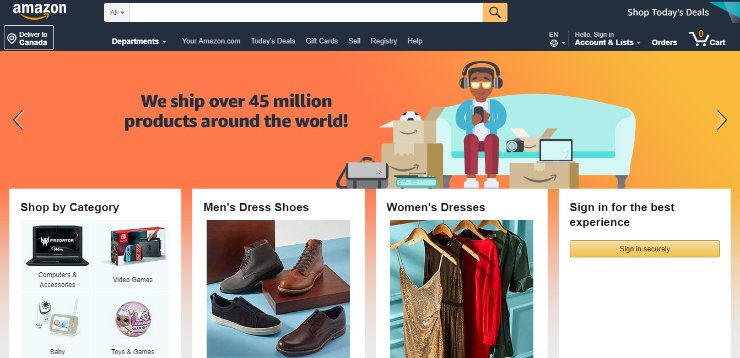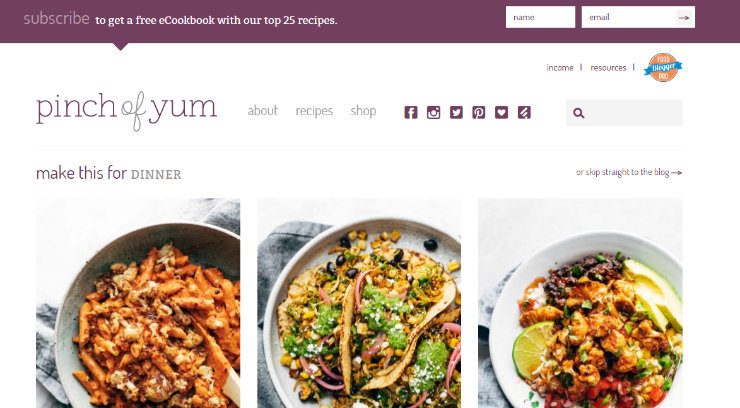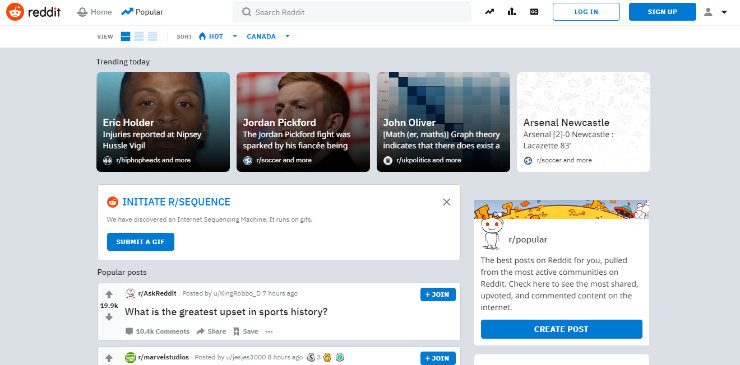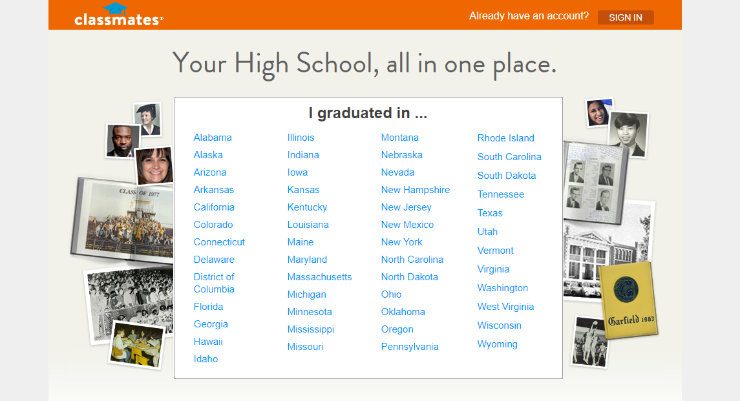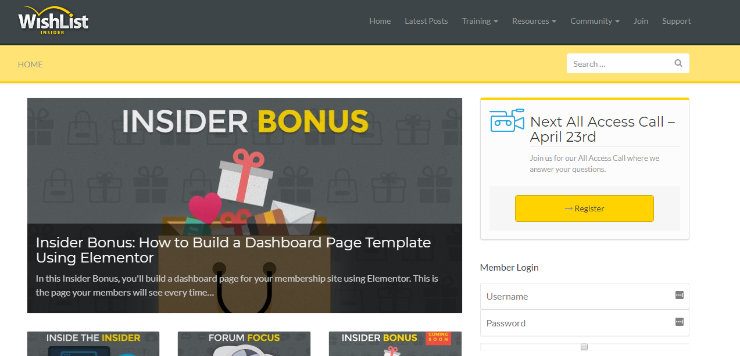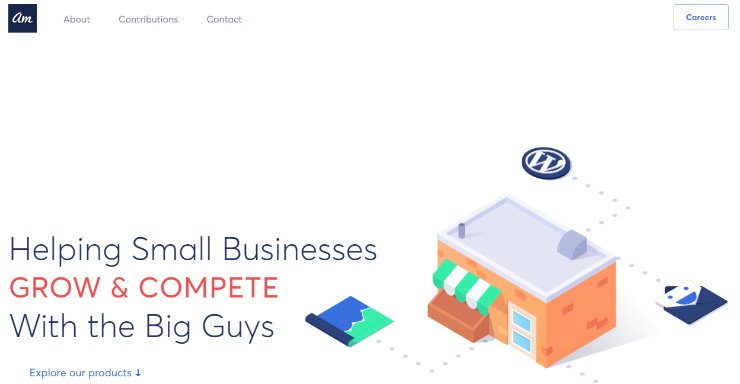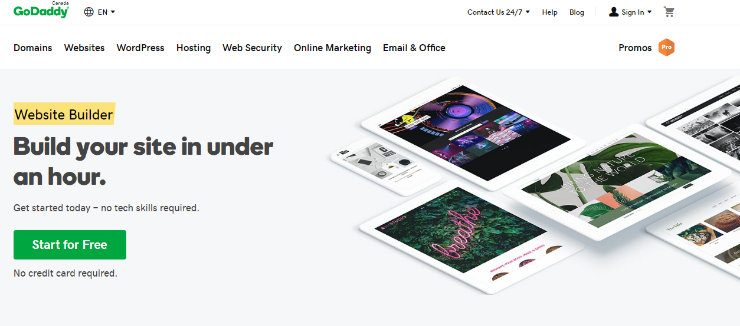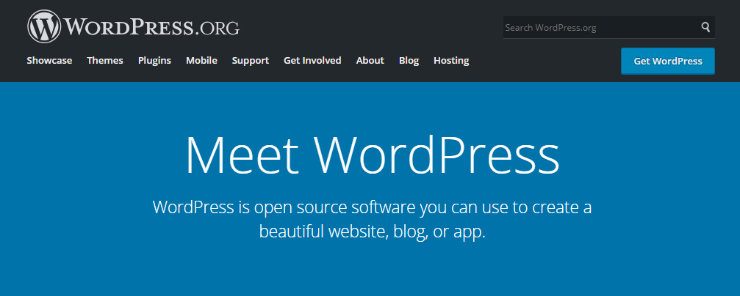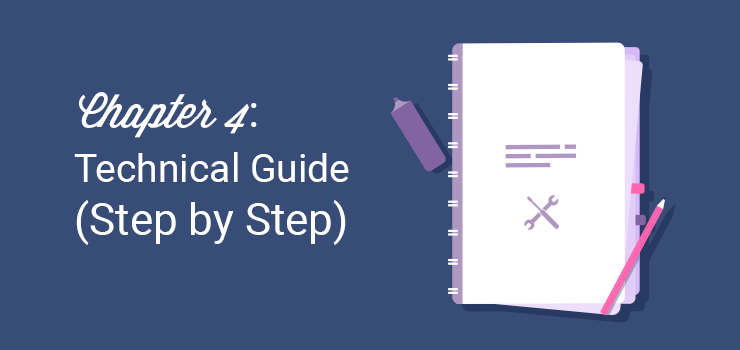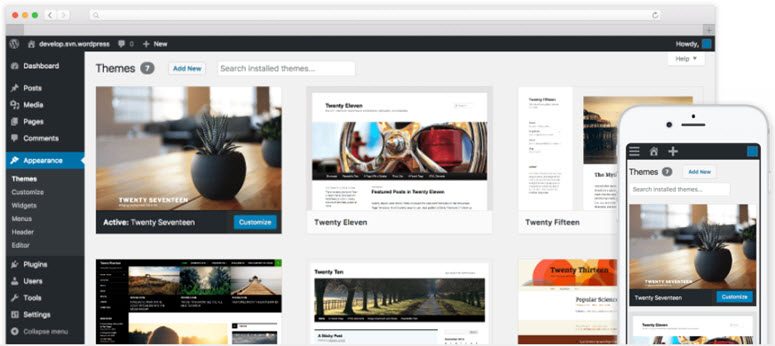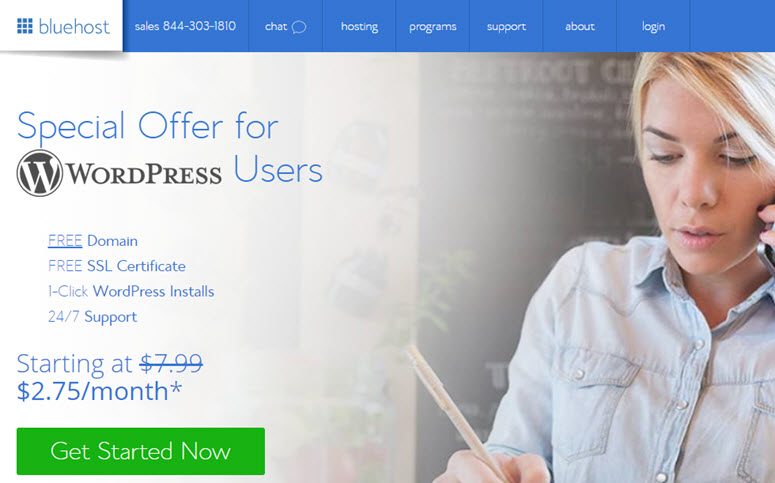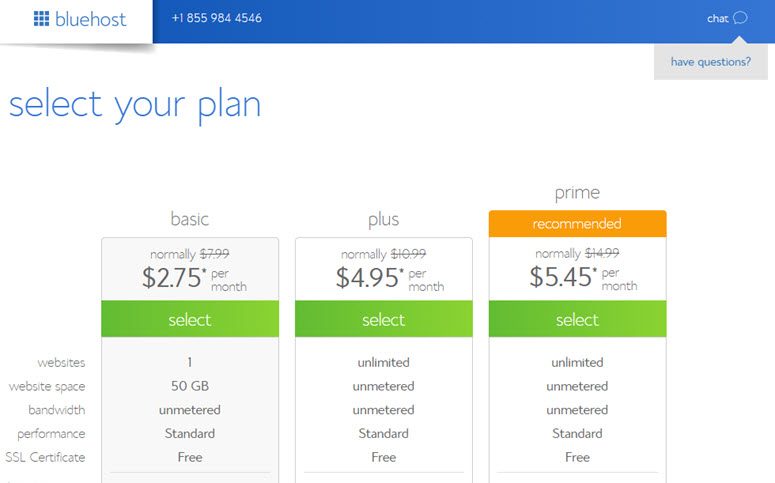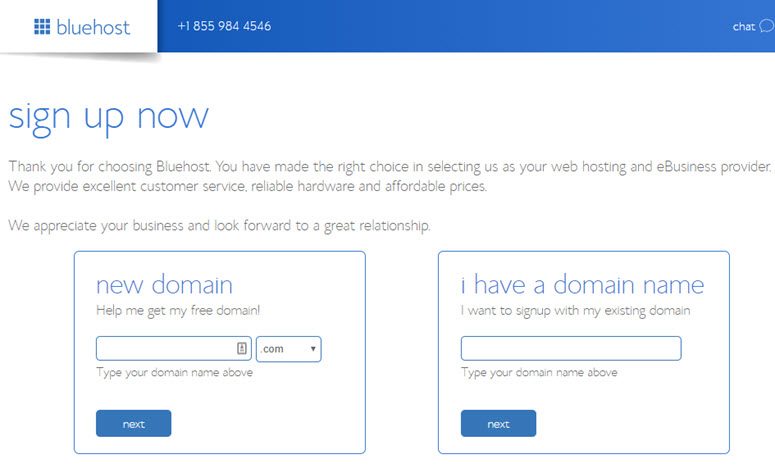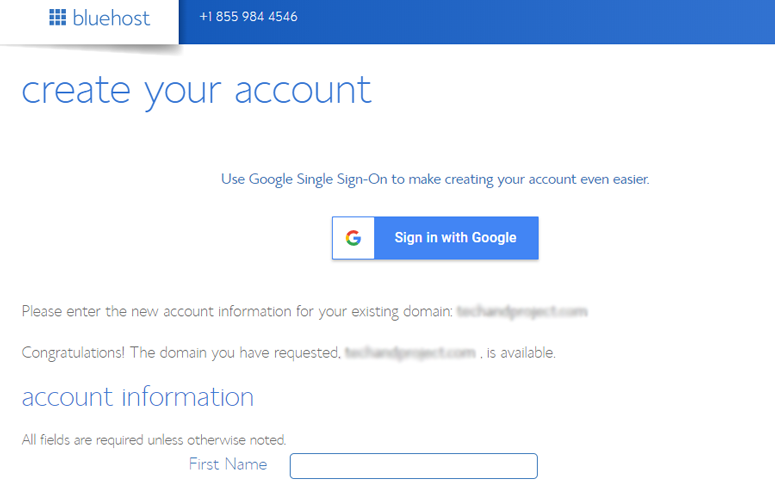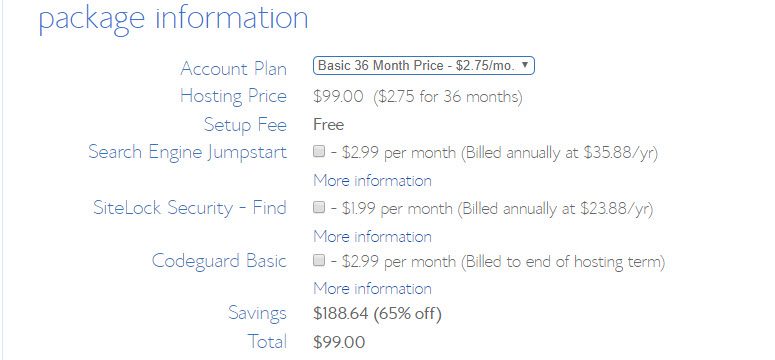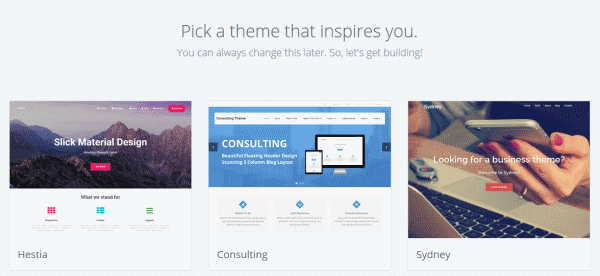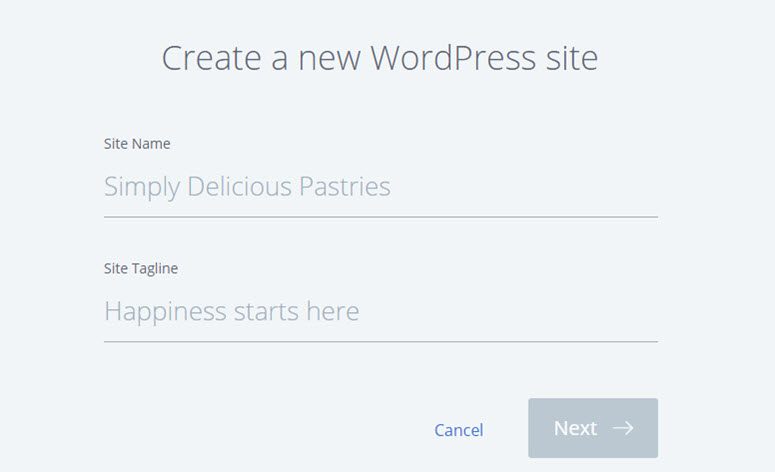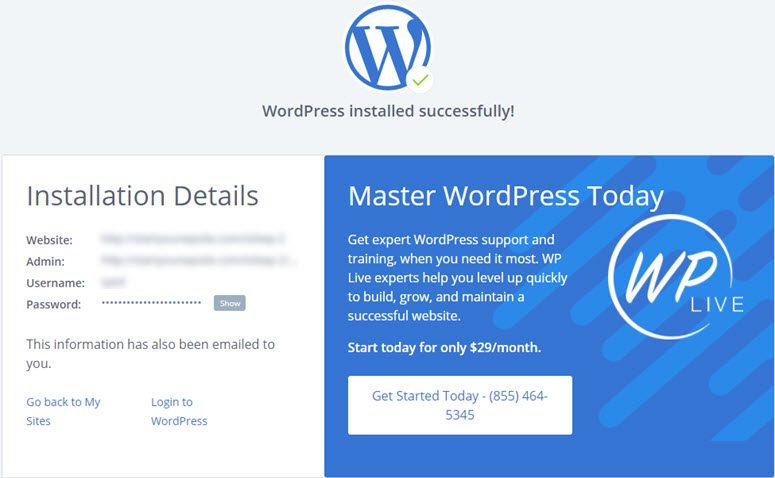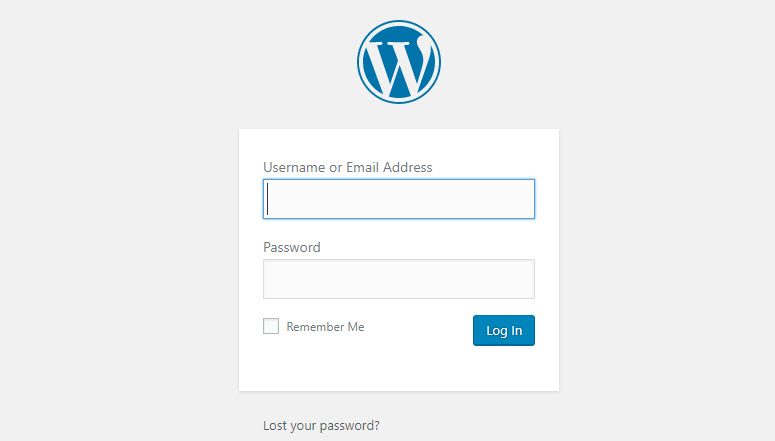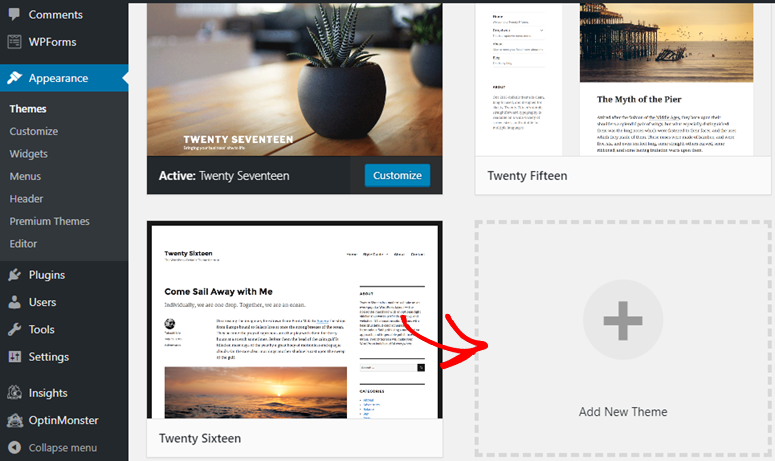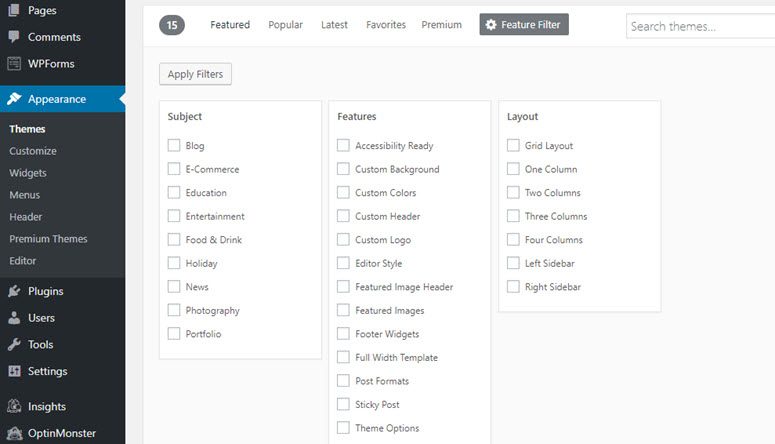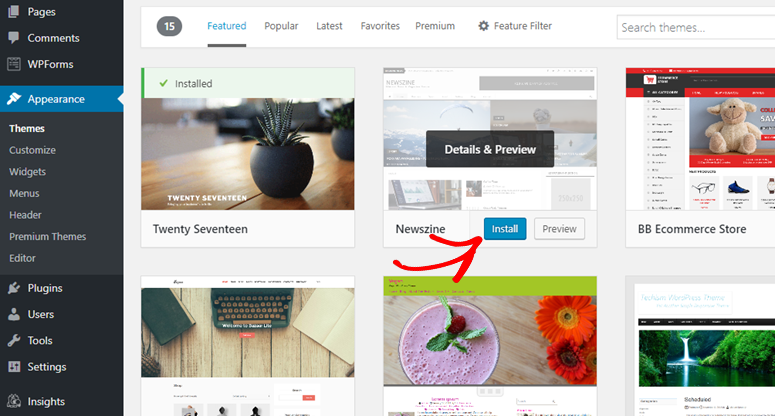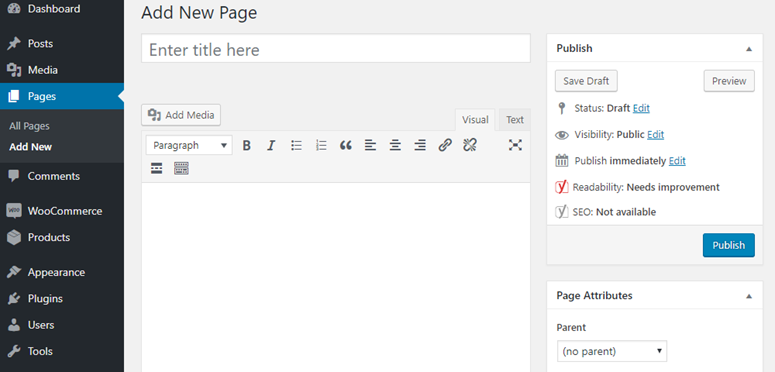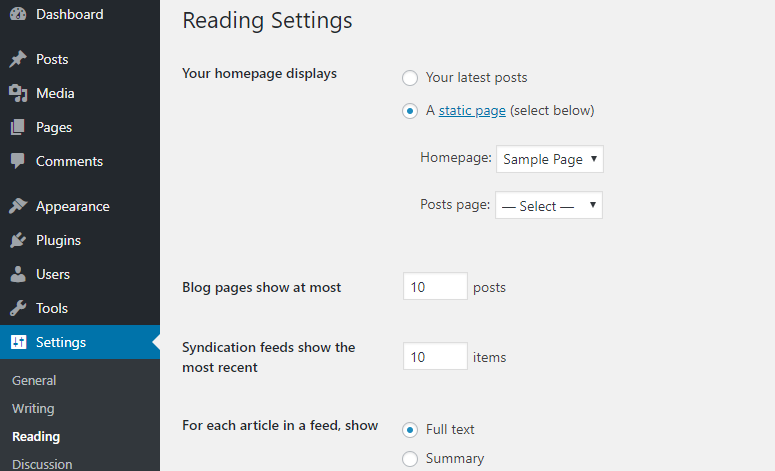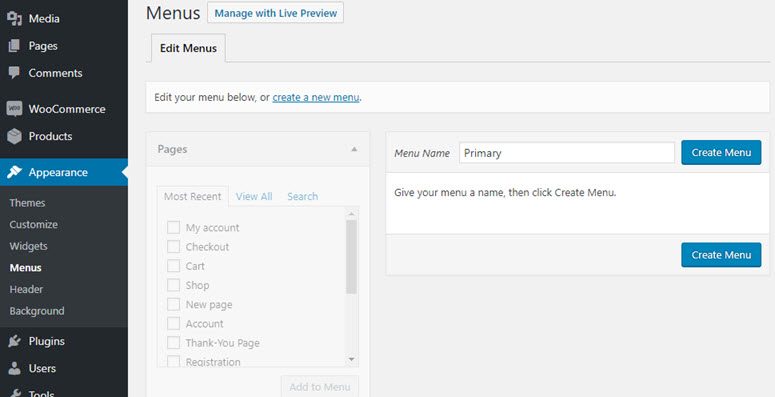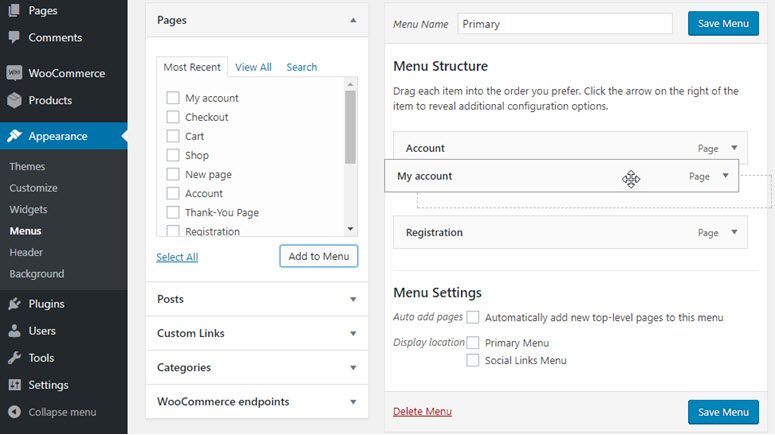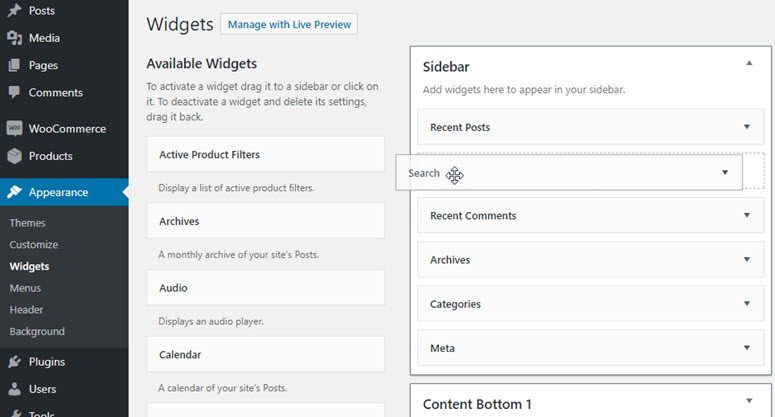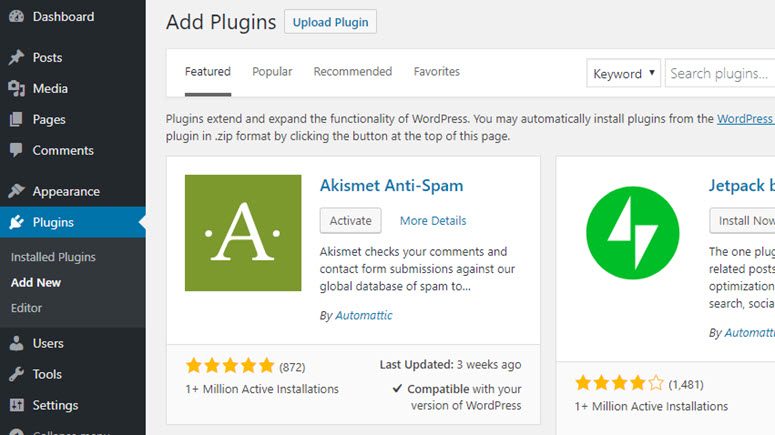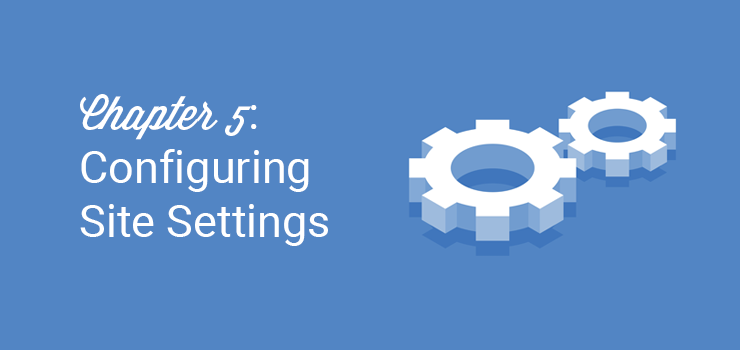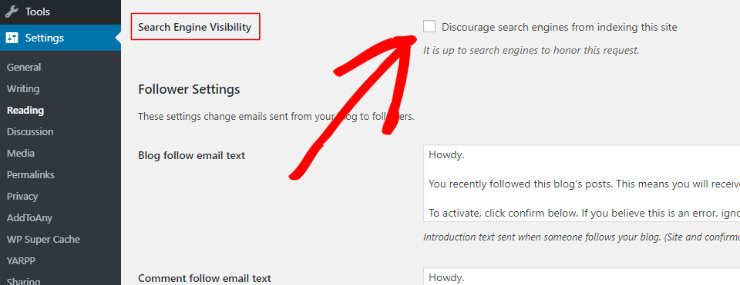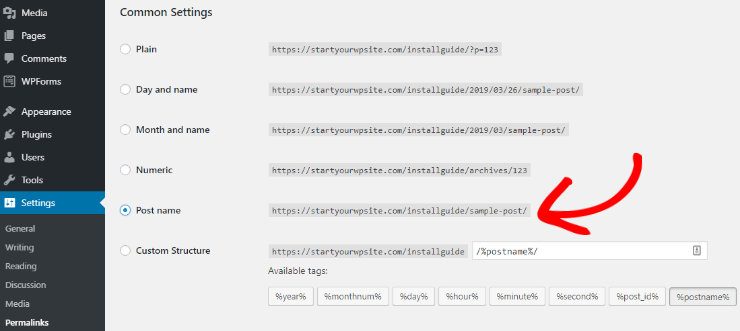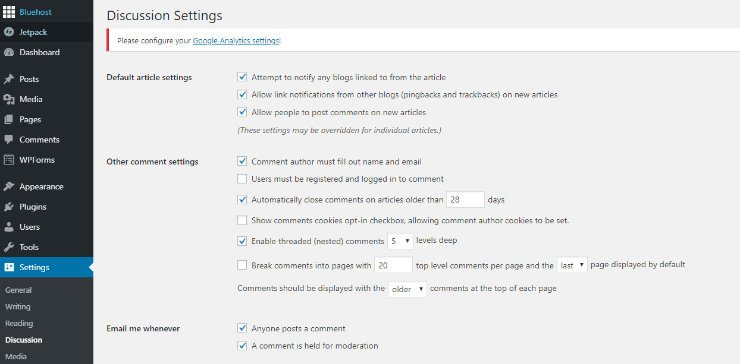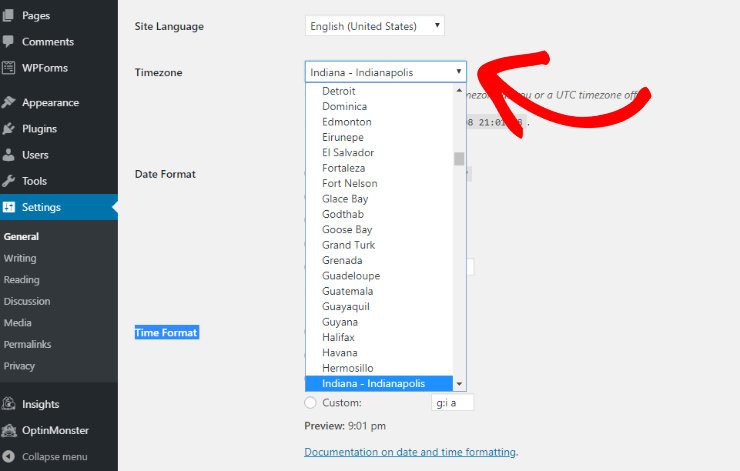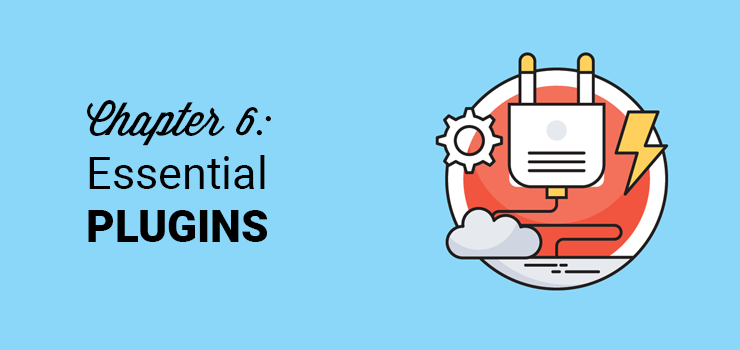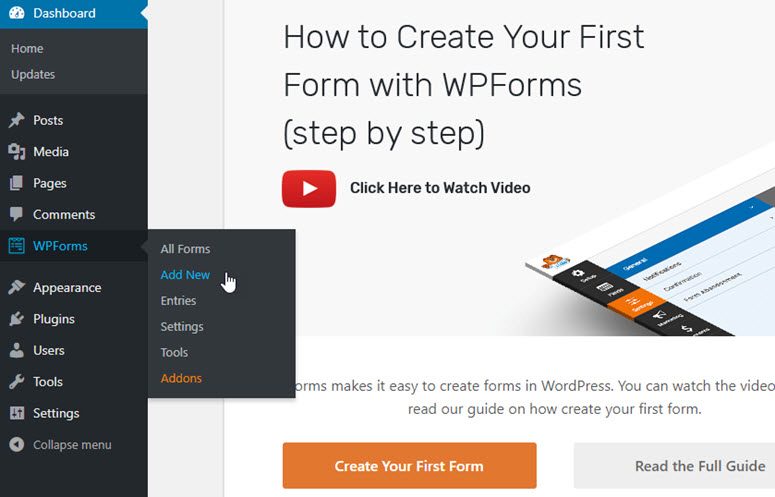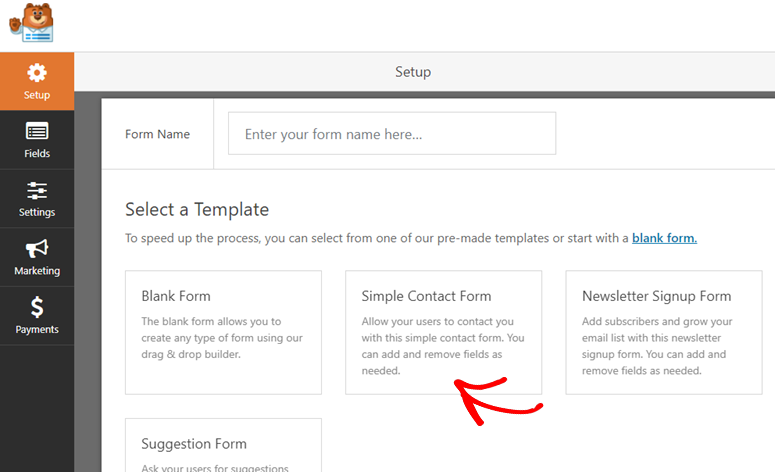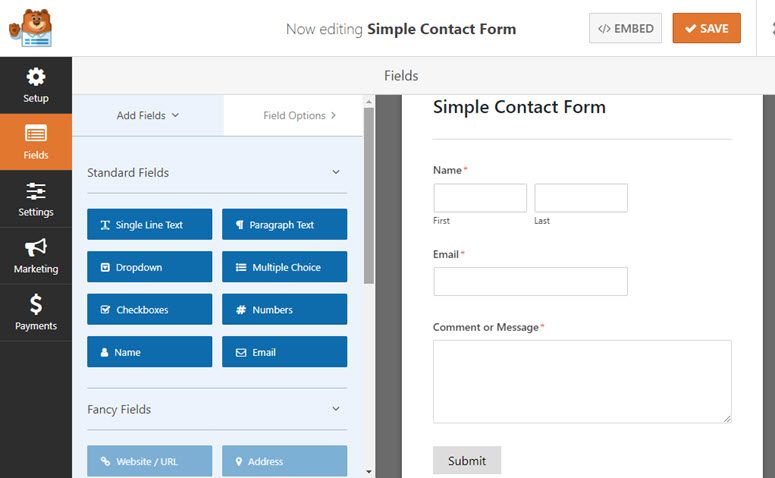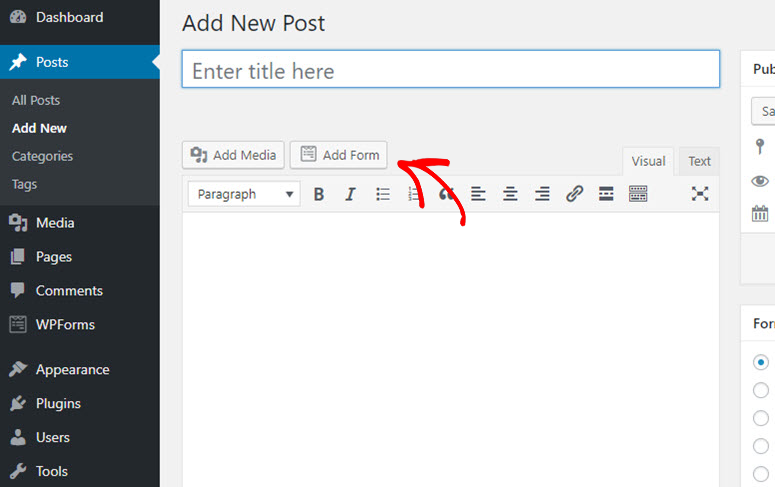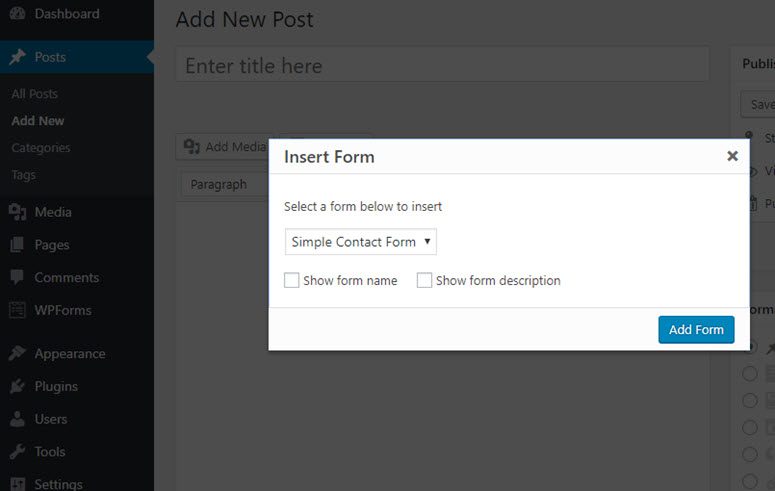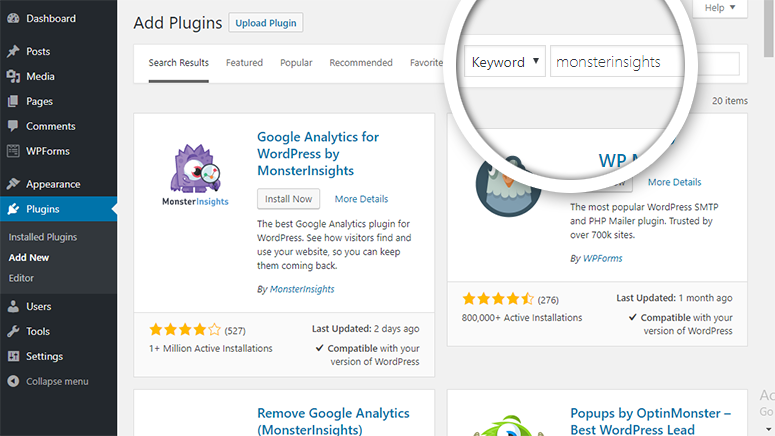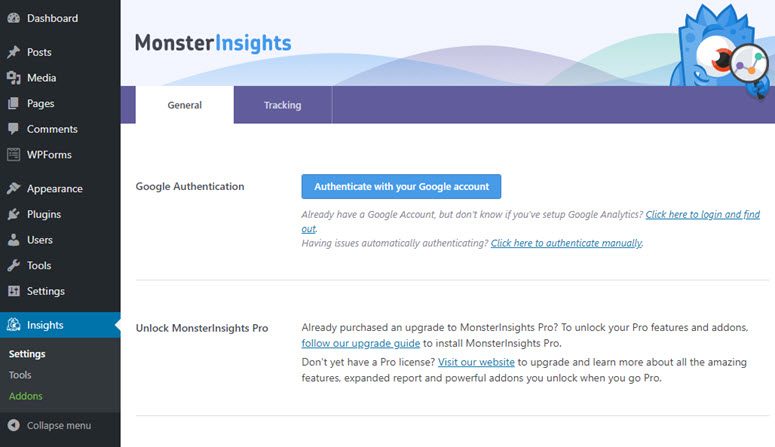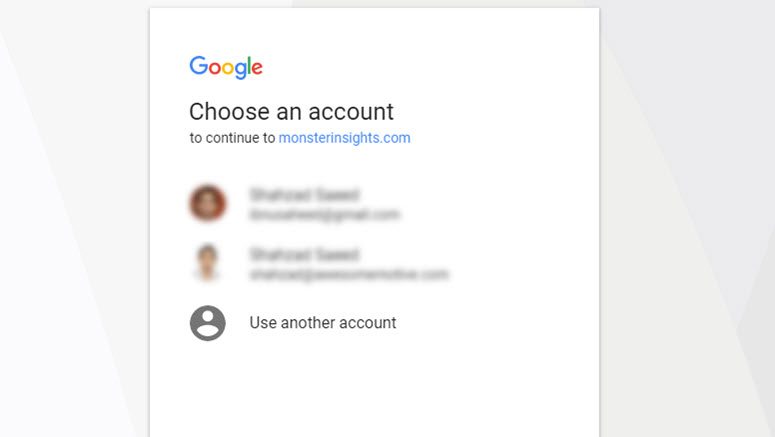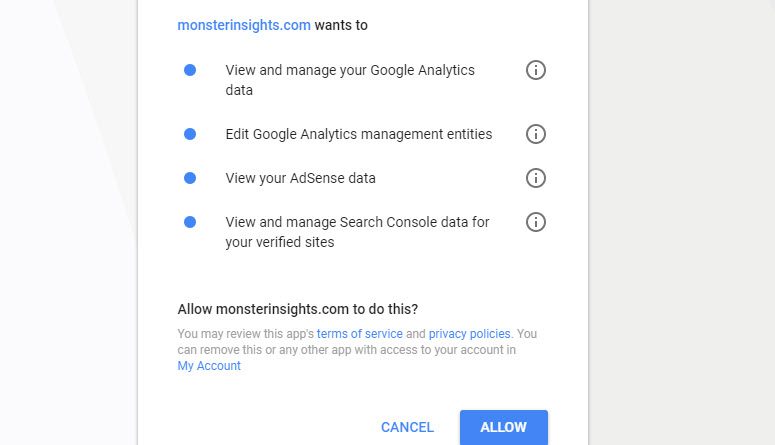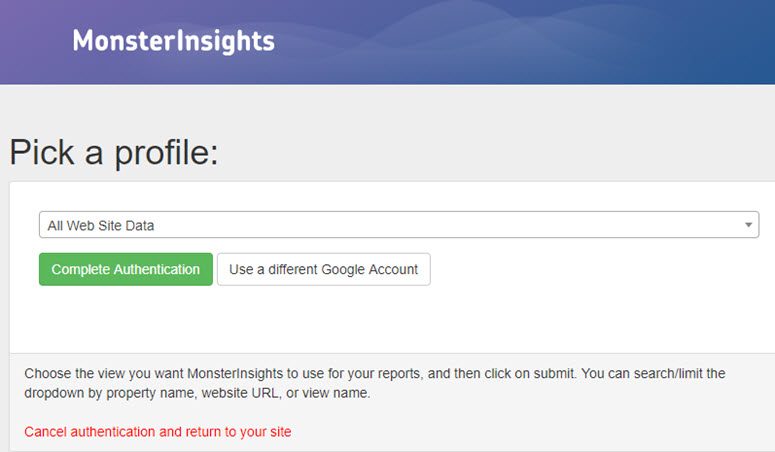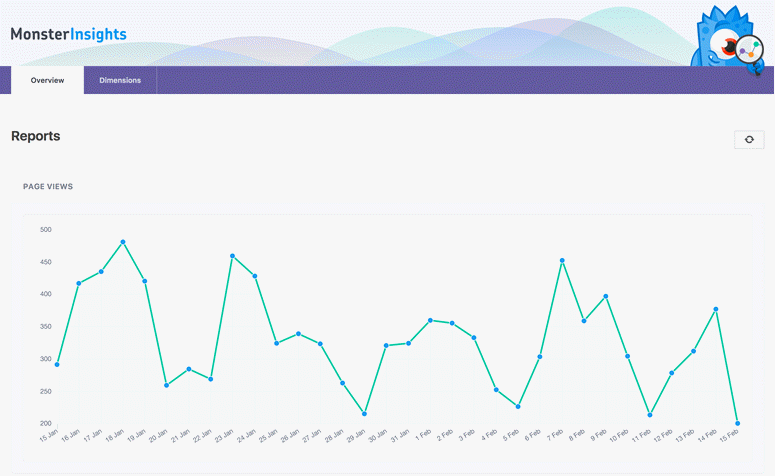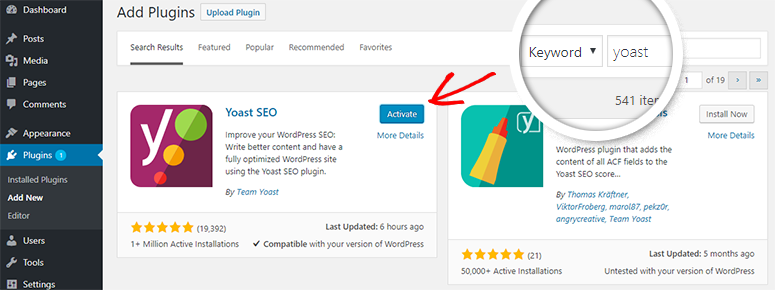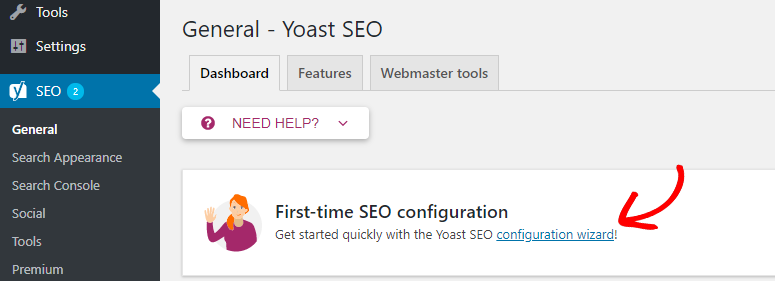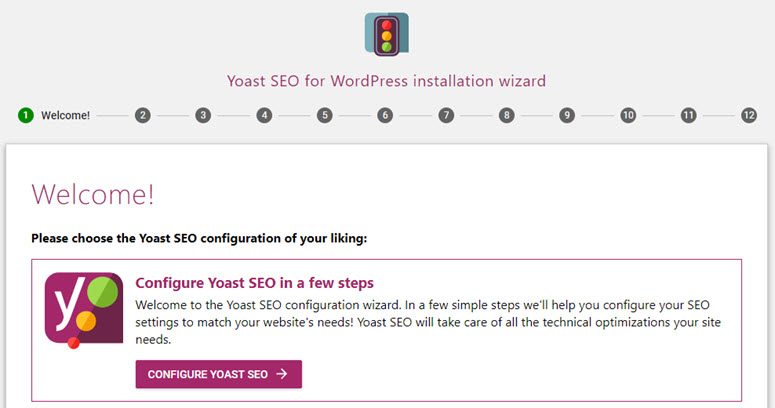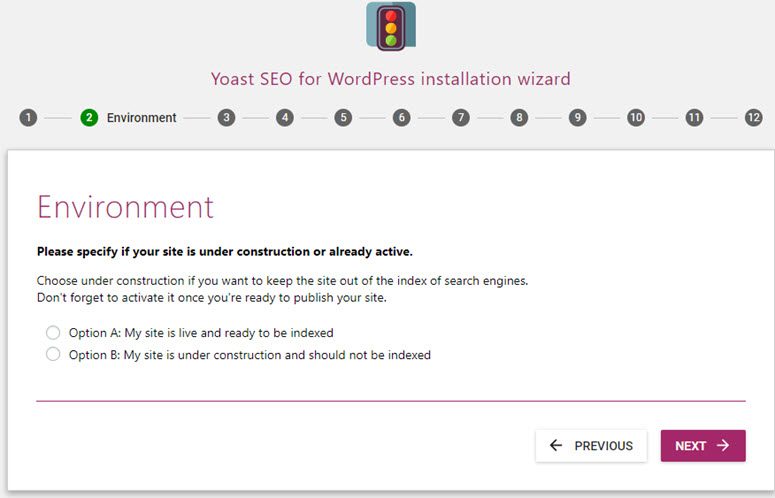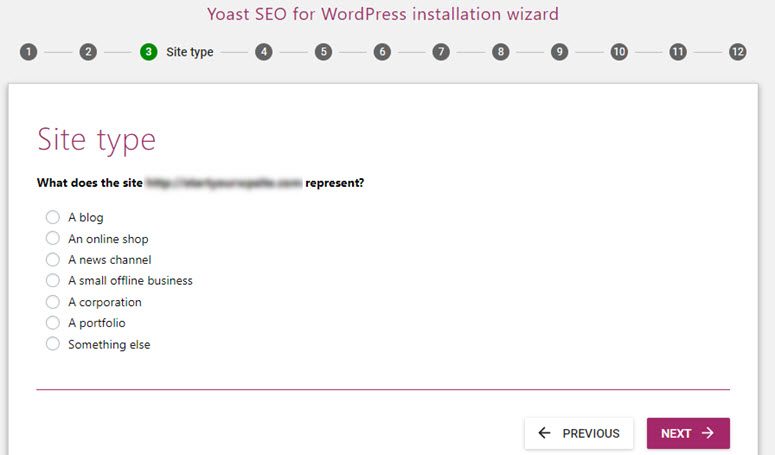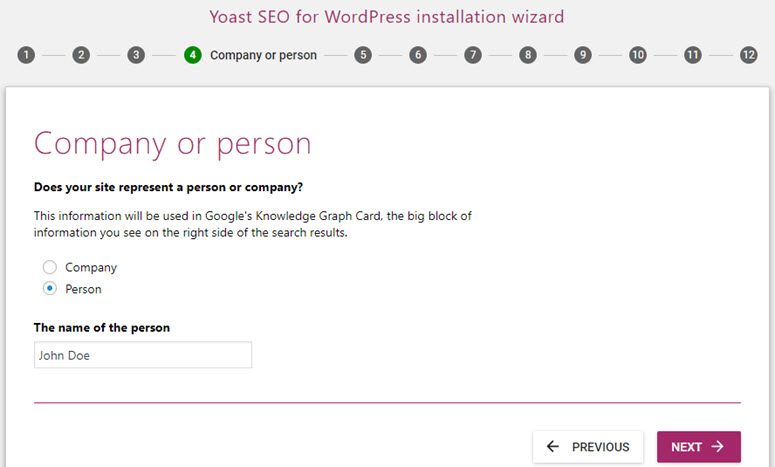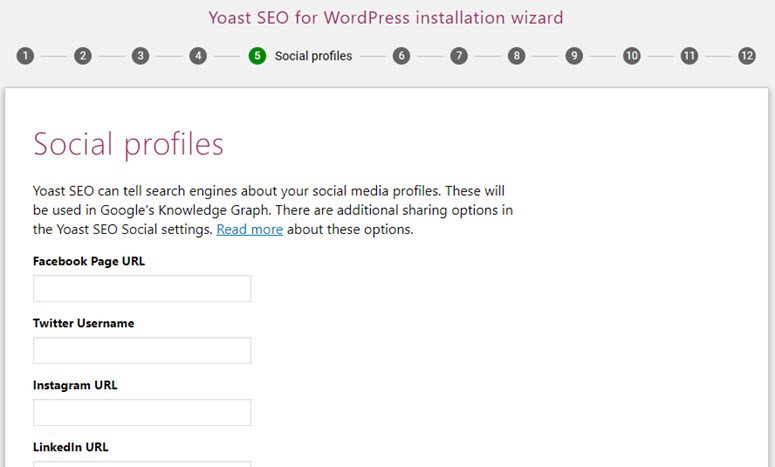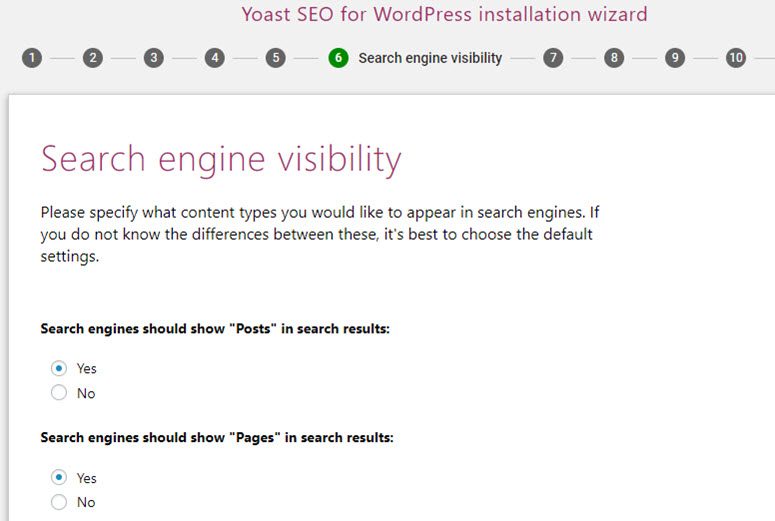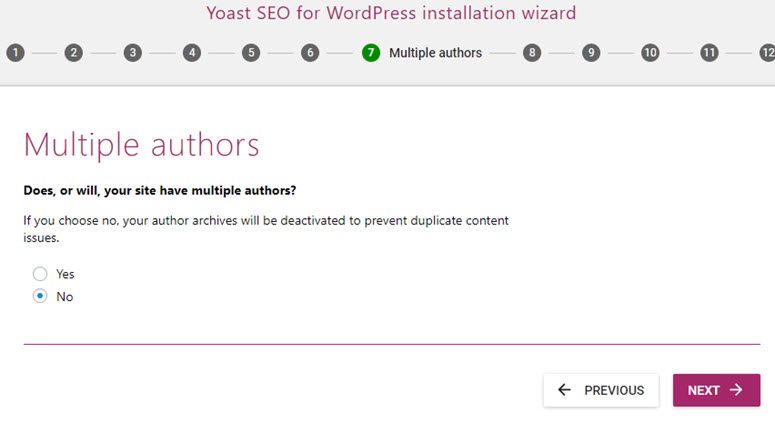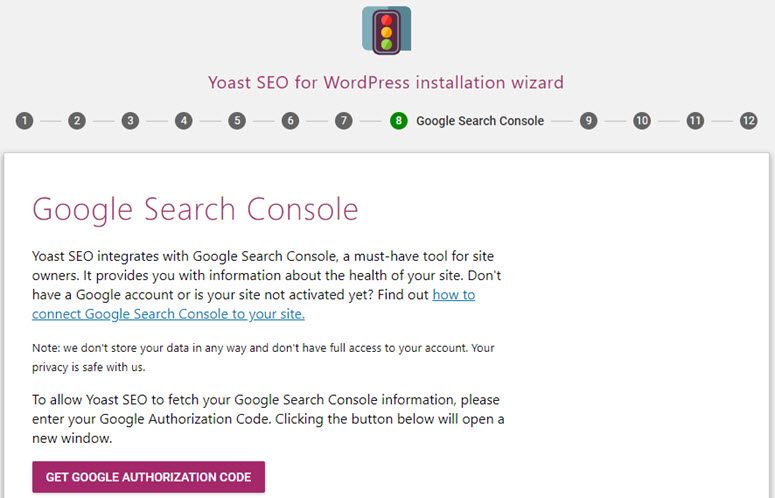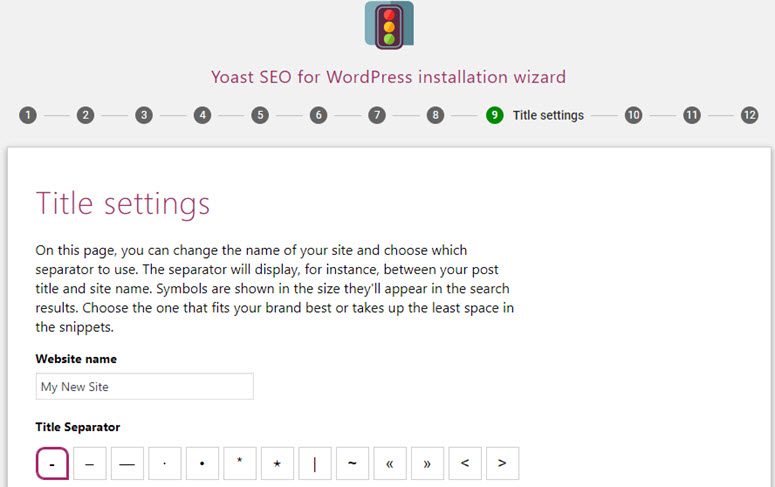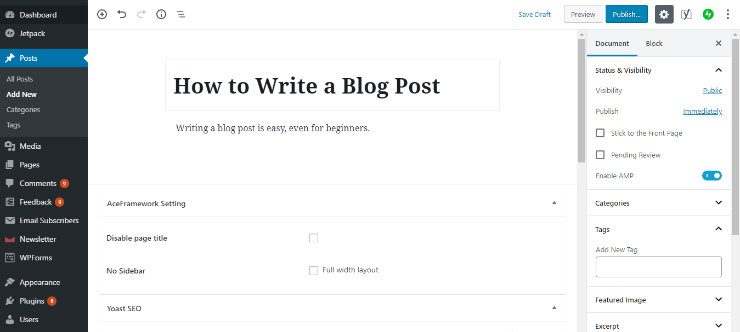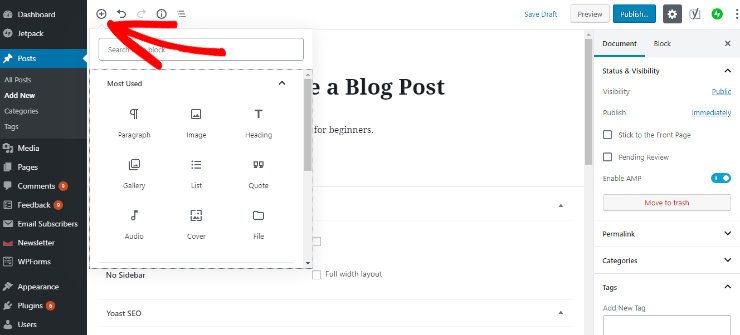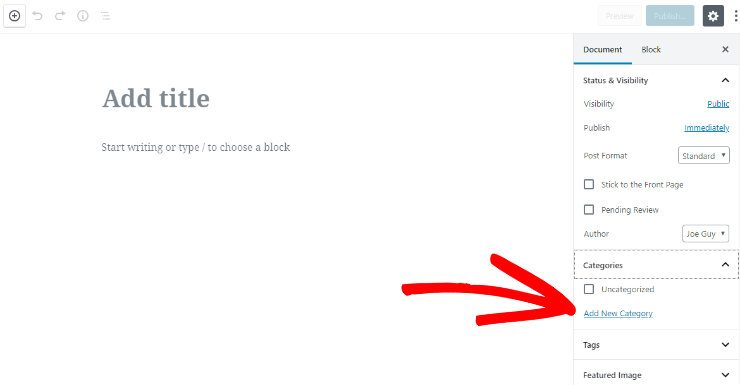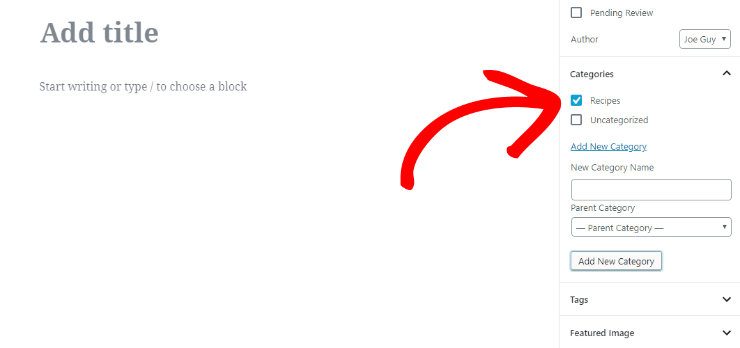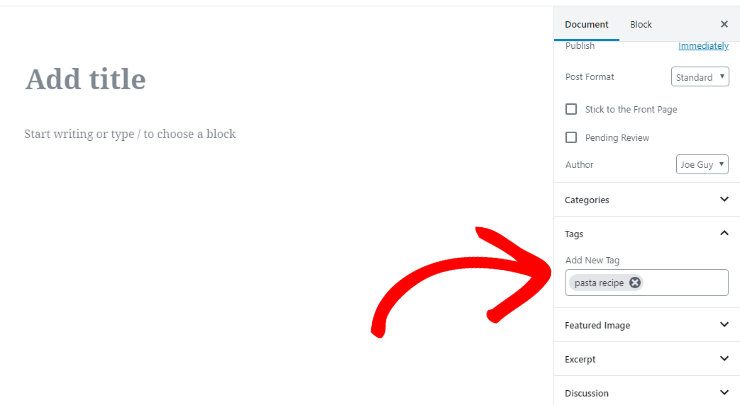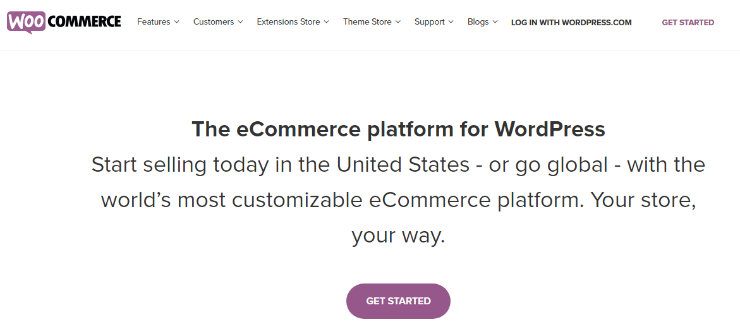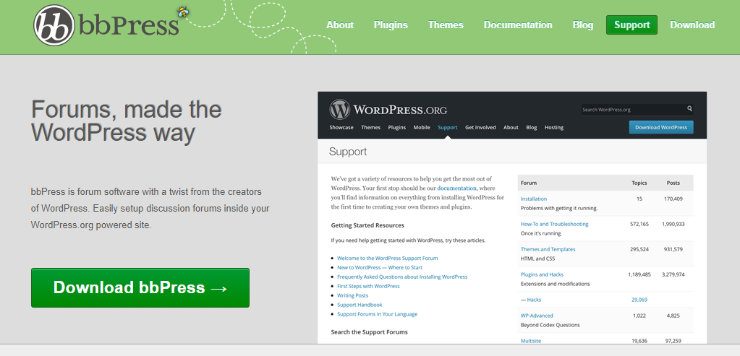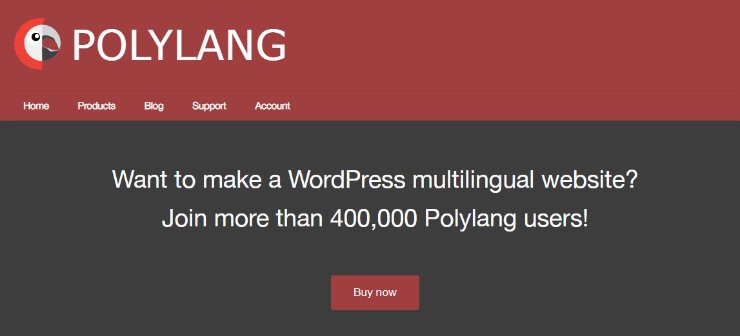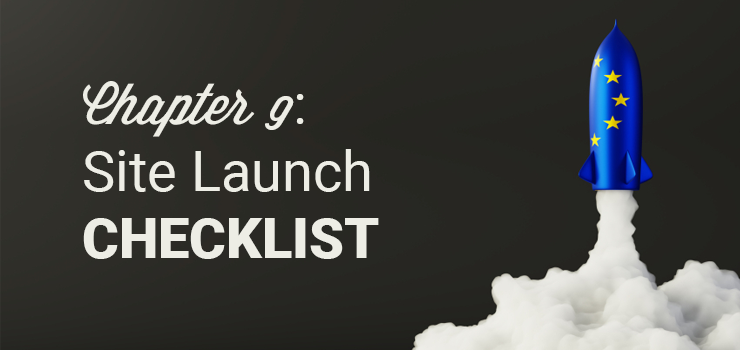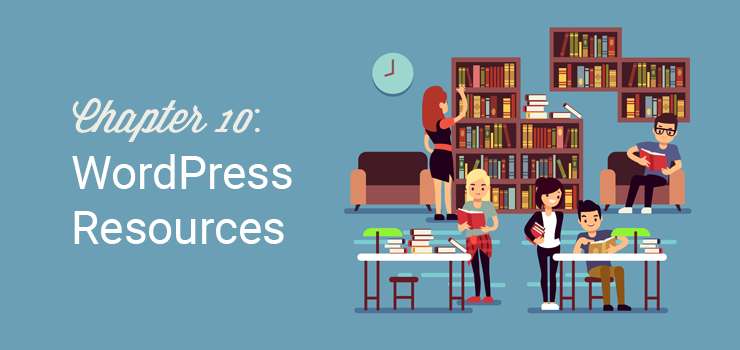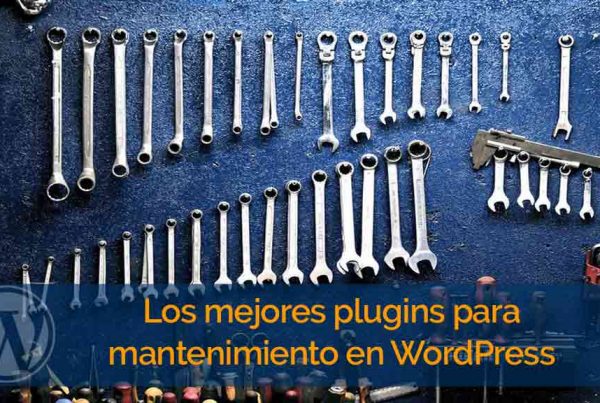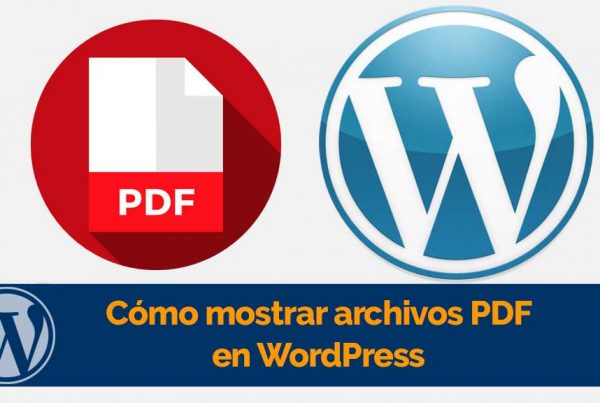If you'd like more information on what to do with your website once it's launched - by way of example, how to promote your website, or how to monetize your website - read any of our other guides on the blog.If you have any questions about making a website, ask us in the comments below!
How to create a professional WordPress website step by step for free in 2020
2V7Rjce
Looking to create a website to be your own? Building a business website or personal website used to be quite a challenge in the past, especially if you weren't a tech savvy person. The good news is that with all the different options available on the internet today, starting a website has become extremely easy even for non-tech savvy users. Hallelujah!
Basically, if you can read, point and click the mouse, then you can create a website in less than 60 minutes.
By creating a website, you can expand your reach to a wider audience and connect with like-minded people globally. With the right strategies, your website can simultaneously help you create a steady stream of income online.
In this article, we will show you how to start a website step by step without the need for technical knowledge.
For your convenience, we have organized our ultimate guide to creating a website into 10 different chapters:
Why start a website?
With thousands of websites being created every day, you might be wondering, why start a website? There are so many out there already, how could you compete? But, it is important to remember, even if your website is not the most popular out there, it can still have great benefits for you.
Some of the benefits of starting your own website include:
- Connect with new people - A website of your own can help you connect with other like-minded people around the world.
- Share your passion - If you are passionate about something, you can create a website to share that passion with others.
- Help others - Do you want to share your experience to help others? A website can help you do this.
- Get a new job - Many employers are looking for candidates online. A personal and professional website can showcase your previous work and help you land a new job.
- Earn extra money - With advertisements, affiliate marketing, or the sale of products online, you can build a website to make a little extra money on the side.
- Promote your business - If you have an existing business, you can start a website to promote your business and get new customers online.
At the same time, today, creating a website is very easy. Therefore, there is nothing stopping you from creating your own website, be it for business or for fun.
↑ Back to Index
Types of websites
Before creating a website, you need to select what kind of website you should create. The type of website you want to make is an important step in figuring out what your website should look like and what you need on your website.
There are a number of different types of websites. We are going to go over some of them below to help you select what kind of website you want to make.
Online store
An online store, at the same time known as an e-commerce website, is where people can buy products directly from your site. You have probably visited a number of ecommerce websites before, most of the big brands have them like Walmart, Amazon, Best Buy, and so on.
You can visit these websites, buy a product online, and have it shipped to you. But online stores are not just for big brands, smaller companies can have them at the same time.
On an e-commerce website, you will need to make a list of the products you have for sale, which includes an image, a description of the product, and the price. At the same time you need a shopping cart and a checkout page where visitors can access your payment information to make a purchase.
Therefore, if you plan to sell products on your website, you will want to create an online store.
Blog
A blog is an informational website with regularly updated articles / articles, written in an informal and conversational style, presented in reverse chronological order (most recent first). When blogging was first introduced, people used it primarily as a type of online journal where they shared what they ate for breakfast, what they did that day, shared their thoughts, and so on.
But today, blogging is much more than that. Blogs are no longer just for fun, in fact you can make money from a blog by adding ads and affiliate links. At the same time, people can visit blogging websites not only to read about someone's life, but to learn about a wide variety of topics. Some popular blogging niches include:
- Lifestyle
- Technology
- The entrepreneurial spirit
- Food / Recipes
- Rising children
- Health / Fitness
- Travels
- Finance / Budget
Some popular blog examples include ours, IsItWP, as well as WPBeginner, Pinch of Yum, TechCrunch, and Huffington Post.
If you are looking to share your knowledge on a particular topic, you should choose to start a blog website.
For more detailed information, check out our post on what a blog is and the differences between a blog and a website.
Forums
A forum website is an online discussion site where people can have conversations in the form of posted messages. This is different from a live chat website because the forums are almost never live and the messages can be read at any time by anyone on the website.
A forum website, also known as a message board, is an opportunity for like-minded people to come together to discuss a wide variety of topics. The forums are usually organized and arranged in different topics so that users can easily find what they want.
Some popular forum websites include Quora and Reddit.
If you want to create an online community for users to discuss a topic or a variety of topics, consider creating a forum website.
Niche Social Network
We have all heard of social networking sites like Facebook and Twitter, which are platforms with billions of users. But a niche social networking site targets only a particular segment of the general population.
In a niche social network, users can establish connections with others who are similar to them or are interested in the same topics. As an example, you could create a niche social network for dog owners or professional musicians.
Some of the most popular social networks are Classmates, Last.fm, and Meetup.
Do you want to create a closed community that allows like-minded people to connect with each other? Start a niche social networking site.
Membership Site
A membership site is a closed website where only people who have subscribed can access the content behind the door. The "gate" is simply a barrier that you put in the front of your website, where users have to log in to access your exclusive content, special offers, or to interact with the community. A membership site can be paid, free, or a little of both.
You can easily convert any website to a membership site using a WordPress plugin like MemberPress.
Some popular membership sites include Wishlist Insider, Quiet Speculation, and Authority by CopyBlogger.
If you want to create a website with a VIP touch, consider creating a membership site.
Static business site
Another popular type of website is a static business site. A static business site is an unalterable, rarely updated website that represents and promotes a specific business. This type of website exists so that people can discover your business online and see what you have to offer.
A static business site can include your business address, your phone number, a contact page, and an overview of what your business does. At the same time, they often include an About page so your potential customers can get to know you and your credentials, a list of the services you offer, business photos, and comments or testimonials.
Some examples of static business sites include Awesome Motive and small business websites like New Eco Landscapes.
So if you want to create an online presence for your small company and you don't have products to sell online, choose a static business site.
Hopefully, you have already decided what kind of website you should create. The next step is to start building it! But first, you have to choose the right website builder.
How to choose a Website Builder
Building a website used to be difficult. If you wanted to have your own website, you would have to start building it from scratch, which requires an expert level of coding skills. Or you would have to hire a web designer to build it for you, which could be quite expensive. Fortunately, that is no longer the case.
There are a number of website builders on the market that make it possible for you to easily build a website in no time. But not all website builders are created equal. And with so many to choose from, how do you know which is the best website builder for you?
In the next section, we'll go over some of the best website builders. We will discuss its features, ease of use, price, and more, to help you select which website builder is the best option for building your website.
3.1. Best Website Builder Showdown
The following website builders are all beginner friendly, this means that with any of these options, you can make a website in a matter of hours. We'll go through each of them to help you select which website builder is best suited for your needs.
Wix
Wix is a website builder that makes it possible for you to create any type of website easily. You can design your own website from a blank whiteboard, or you can choose from over 500 designer-made templates that will give your website a professional look in no time. At the same time you can add video backgrounds, animations and much more easily.
Pros:
- Free - You can get started with Wix for free. Its free plan enables you to create a simple drag-and-drop website with limited features.
- Responsive design - Any website you create with Wix will be optimized for mobile, tablet and desktop. This means that regardless of the device your website visitors use, your website will adapt accordingly.
- Advanced features - With Wix you can easily integrate advanced features, like adding an eCommerce store. Wix at the same time provides SEO tools and guides to help optimize your site for organic traffic.
Cons:
- Wix Brand Ads - Wix shows branded ads on your website with the free plan, you need to upgrade to a premium plan to remove the ads.
- Limited customization - Personalization is limited with Wix. You have to upgrade to a premium plan to have access to more features, and it is still limited compared to other website builders. As an example, if you want to accept online payments on your website, you need to upgrade to a business plan starting at $20 per month.
- No Export - Wix does not offer the ability to export your website data. So if you want to move your website to another platform in the future, there is no easy way to do it.
Price:
You can build a simple website for free with Wix. But to get access to more powerful features and remove Wix-branded ads, you need to upgrade to a paid website plan. These plans range from $5 / month - $29 / month. As we previously mentioned, if you want to start an ecommerce website with Wix, you will have to upgrade to an ecommerce and business plan, ranging from $20 / mo - $35 / mo.
GoDaddy Website Builder
GoDaddy is a well-known domain registrar and hosting service provider, but at the same time it offers a simple drag-and-drop website builder. They offer a number of website building templates to get you started. At the same time, those templates are easily customizable using their mix and match sections.
Pros:
- Marketing tools - GoDaddy Website Builders comes with a number of marketing tools including SEO and email marketing to increase your online presence.
- Website Type Options - This website builder enables you to create a number of different types of website. You can easily add a blog or an ecommerce store to your site.
- Mobile-Friendly - All websites created in GoDaddy Website Builder are mobile.
Cons:
- Limited customization - This website builder offers fewer layout options and fewer features for your site than other options.
Price:
There is no free plan offered with this website builder. You can get started with GoDaddy Website Builder for just $5.99 / mo with your Personal Plan. Regardless, if you want to accept online payments or PayPal donations on your website, you will need to upgrade to the business plan for $9.99 per month.
Do you want to make an ecommerce site with GoDaddy Website Builder? Then you will have to choose the most expensive plan, the Online Store, which will cost you $29.99 / month.
Buy
Shopify is a popular website builder geared towards e-commerce websites. This website builder makes it possible for you to make an online store in the blink of an eye, without having to deal with any code. They offer a ton of free and paid themes, customizable to give your online store a professional look in no time.
Pros:
- Online payments - You can accept payments on Shopify without third-party accounts. At the same time, they seamlessly integrate with more than 100 third-party payment gateways.
- Advanced marketing tools - Shopify offers advanced marketing tools such as SEO tools and built-in blogging. At the same time, they provide marketing dashboard reports so you can monitor the performance of your online store.
- Mobile-Friendly - Your online store will look great no matter what device users are viewing your site on.
Cons:
- Transaction fees - If you use an external payment gateway, you will be charged a hefty transaction fee, ranging from 0.5 to 2%.
- Expensive apps - Apps for social media incorporation, live chat, flash sales, and more have to be purchased separately. This can make customizing your online store very expensive.
Price:
You can get started with Shopify for $29 / mo with the Basic plan, this includes a 3% transaction fee. You can switch to the second highest plan, $79 / month, to lower the transaction fee to 1%. If you want to lower the transaction fee to 0.5% and get access to all the advanced features you need to run your online store, you will need to upgrade to the more expensive plan, which costs $299 / month.
Square space
Squarespace is another popular website builder that comes with everything you need to build a personal or business website. They offer a range of impressive templates designed for a variety of industries and niches to transform your website in a second. At the same time, each template comes with a number of customizable features.
Pros:
- Bandwidth and storage - With any of their plans, you get unlimited bandwidth and storage.
- No transaction fees - You will not be charged transaction fees for e-commerce transactions with your basic or advanced e-commerce plans.
Cons:
- No Free Plan - Squarespace does not offer any free plans, unlike other website builders. At the same time, their starter plan is more expensive than other website builders.
- No third-party apps - Squarespace does not allow any third-party application or extension.
Price:
The personal plan for Squarespace costs $12 / month, this includes the ability to build unlimited pages. If you want to add an ecommerce store to your website, you will have to upgrade to your business plan which costs $18 / month with a transaction fee of 3%. If you want to clear transaction fees, you will need to upgrade to your basic online store plan for $26 / month.
WordPress.org
WordPress.org is the most popular website builder of all time, and in fact it is the creator of more than 30% of all the websites on the web. With WordPress, also known as WordPress, you can easily build any type of website you want, including a blog, a small business or company website, an e-commerce store, a portfolio, and much more.
Pros:
- Endless customization - With WordPress you have access to thousands of free and paid themes to transform the appearance of your website. At the same time, you can easily change the theme, whenever you want. At the same time you have access to thousands of free and paid plugins to customize and add more power to your website. Building a completely custom website is easy and affordable with WordPress.
- Control - When you use WordPress, you have full control of your website.
Cons:
- Slight learning curve - Learning to use WordPress takes a little time. But, there are plugins that you can use to make the process easier, like drag and drop page builders.
- Can't create a free website - You cannot create a free website with WordPress.org, you will have to pay for hosting and a domain name.
Price:
While WordPress software is free, you still need to spend some money to make a website. You will need to purchase a domain name and web hosting, but don't worry, these can be very affordable depending on the providers you choose. At the same time, we will see how to buy a domain name and web hosting later in this guide.
3.2. Why do we recommend WordPress.org?
WordPress is by far the best option for building a website. It is the most popular website builder for a reason. You can use WordPress to build any type of website you want, be it a business website, blog, membership site, forum site, e-commerce site, etc. At the same time, with WordPress, you get instant access to whatever features you need to make your website successful.
Let's quickly go over the reasons why WordPress.org is the best website builder:
- Free - WordPress is free to use. You need to buy a domain name and web hosting, but even with those costs, WordPress is still one of the most affordable website builders out there.
- Popular - With over 30% of all websites online, WordPress is the most widely used website builder by far. There is safety in numbers.
- Community - There is a great WordPress community online. Anytime you have a problem or need an answer to a question, you can find tons of articles, tutorials, and discussions online to help you.
- Themes and Plugins - With other website builders, you need to pay extra to get access to plugins that add more power and customization to your website. But with WordPress, you have access to thousands of free plugins instantly. Not only that, but at the same time they offer thousands of free themes.
- Easy to use - While WordPress takes some getting used to, it is actually very simple and easy to use. Installing WordPress doesn't take long either, many hosting providers offer one-click WordPress installation.
In this way, in general, we recommend using WordPress to build your website. Even beginners can make a completely custom WordPress website in no time.
Don't confuse WordPress.org with WordPress.com. We recommend building your website with WordPress.org because you get full control over your website, unlimited customization options, and it is less expensive at the same time. For more details, see our article comparing WordPress.com vs. WordPress.org.
↑ Back to Index
«Previous: Chapter 2 - Website Types
Chapter 4: Set Up Your Website With WordPress - The Technical Guide
WordPress is the most popular website building platform available on the internet. Currently, it is the basis for more than 30% of all websites.
WordPress makes it formidably easy to build a website from scratch. You can easily customize the appearance and features of your site by installing the appropriate theme and plugins (apps) respectively.
The best part is that you don't need to know any code or be a tech savvy. We will help you get your WordPress website up and running in less than an hour. All you have to do is follow the step-by-step guide below.
4.1. Choosing a platform - Self Hosted WordPress
Because there are tons of different website builders to choose from, it's easy to get overwhelmed. Even though many website builders are free to use, we always recommend starting a website on a self-hosted WordPress platform.
With a free website builder, you cannot set up a custom domain name. As an example, you won't be able to get a custom domain like:
www.mycoolwebsite.com
Instead, you'd be stuck with something like:
www.freewebsitebuilder.com/mycoolwebsite.com.
Which is not that professional and is harder for your visitors to remember. A free website builder at the same time displays irrelevant ads, which makes your website look unprofessional and can annoy your visitors. If you want to set up a custom domain name and delete your ads, then almost all website builders require you to subscribe to a premium plan which is quite expensive.
Another downside is that the interface of most website builders comes with a bunch of bloated options that you will probably never need. This makes creating a website a tedious task for novice users.
Apart from this, a self-hosted WordPress platform gives you full control over your site. The interface is uncluttered, and you can easily expand the features of your site by simply installing the plugins you need. At the same time, WordPress offers thousands of free plugins, this enables you to make your site more powerful at no cost.
At the same time, you can find thousands of free WordPress themes in the official theme repository that allow you to easily customize the appearance of your site the way you want.
4.2. Buy a domain name and a hosting account
To start a website on WordPress.org, you will need to have a domain name and a web hosting account.
Domain name: Your domain name is the address of your website (URL) on the Internet, such as Google.com or IsItWP.com. It is what your customers type in their browsers to enter your website. A domain name regularly costs around $14.99 per year.
Web hosting: Your web hosting account is where your website content and files are stored online. Think of it as the physical home of your website. When a visitor tries to enter your website by typing in their web address (domain name), they will be directed to the website that you have set up on your web hosting server. Web hosting regularly costs $7.99 per month.
The combined cost of a domain name and hosting can be quite expensive, especially if you are just getting started.
That is why we have reached an agreement with Bluehost to offer our users a FREE domain name and more than 60% discount on web hosting. It's a great thing to start with.
Click here to claim this exclusive offer from Bluehost »
Bluehost is one of the largest hosting companies in the world. They have been working with the WordPress community since 2005, and are an officially recommended WordPress hosting provider. Read our Bluehost review for more information.
Note: We believe in total transparency. If you buy hosting using our referral link, then we will receive a small commission at no additional cost to you. Actually, you will get a discount on hosting + a free domain name + free SSL. We can get a commission from almost any hosting company, but we recommend products that we truly believe will add value to our readers.
To start your WordPress website, head over to the Bluehost website and click the button Start now.
On the next page, you will be asked to choose a plan. Since you are just getting started, you must choose the basic plan. Includes a free domain name and SSL certificate. You can always update later as your site grows.
On the next screen, you will be asked to choose an existing domain that you own or you can purchase a new domain for free. Go ahead and buy a new one since it's free.
You will be asked to enter your account information. To facilitate registration, you can log in with Google with just a couple of clicks.
After entering your details, scroll down the page until you find the package information box. You can choose the basic plan for 12 months, 24 months or 36 months. At the same time you can see that some addons are pre-selected, adding up the total price. We recommend unchecking the addons as you won't need them right away. You can always buy them later if your needs change.
Choosing the 36-month plan will give you the best value for money.
Once you've finished choosing your plans, scroll down the page to access your payment details. You have to accept their Terms of Service and then click Submit.
That's all!
You have successfully subscribed to a hosting plan. You will be asked to create a password for your account.
You will then receive an email with details on how to log into your web hosting control panel (cPanel), where you can manage everything from file hosting to emails to technical support.
4.3. Install WordPress on your Web Host
With Bluehost, you don't have to go through a separate WordPress installation process as Bluehost now installs WordPress by default. All you have to do is choose your WordPress theme, specify your website name and tagline, and you are good to go with WordPress.
After subscribing to your hosting plan, you will be asked to choose a WordPress theme. You can choose anything during this step because you can always change the theme later (we'll explain how to do that in a later step in this tutorial). The most important part is to start building your site so that any theme will do the work for now.
You will then be asked to choose your website name and tagline.
After specifying the details, click Next. Bluehost will install WordPress for you and, once done, it will show you a screen like this:
You can enter your site by adding wp-admin to your url. This is what your WordPress login URL should look like:
http://example.com/wp-admin
You can now log into your WordPress website with the credentials sent to your email address.
4.4. Change WordPress theme
With WordPress, you can easily change the visual appearance of your website. All you have to do is find the correct WordPress theme and install it on your WordPress website.
The default WordPress theme is good, but if you need a different look for your site, then you can find an alternative theme in the official directory and install it on your site. Finding the perfect theme will allow you to make the site truly yours, and give it that personal "you" feeling.
It is highly recommended to take a look at our list of top WordPress themes before diving in and installing a random theme.
If you choose a premium theme, then it has to be downloaded from the theme provider's site and uploaded to your WordPress.
If you decide to go with a free WordPress theme from the official theme repository, then you can install it directly from your WordPress dashboard without needing to manually download it from your computer.
To install a free theme, go to Appearance »Themes in your WordPress dashboard. Then click on the box Add new topic.
This will show you some featured topics on your dashboard. Before installation, you can even see the preview and its details by clicking on the image.
At the same time you can filter themes based on your website layouts, features and niche by clicking the button Feature filter.
In the right corner, type the name of the topic in the search bar. Once you've found the perfect theme, hover over its image and click the button Install. Then click the button Activate to change the appearance of your website.
4.5. Create your first page
After changing the appearance of your site, it is time to create a new page on your site.
In the menu on the left of your WordPress dashboard, you can find two similar options that often confuse beginners: Messages and pages.
Choose pages if you want to create separate pages on your WordPress website such as About Us page, Contact page, Terms of Service page, etc.
Choose Tickets if you want to create a blog post that appears in reverse chronological order (newest first) on your WordPress website. The messages at the same time are organized into categories and tags. You can read the difference between categories and tags to learn more about it.
To create your first page, go to your page editor by clicking Pages »Add new. You will need to add a title for your page before you start writing content in the page editor. To upload images to your website, all you have to do is drag and drop your images into the text editor from your computer. At the same time you can use the button Add media to upload your images and videos.
4.6. Set up a static home page
By default, WordPress displays the latest blog posts as your home page instead of a static page. If you want to set a custom page as your home page, just follow the steps below.
After creating a page, go to Settings »Read in your WordPress control panel. In option Your home page, you must choose A static page and select the page you want to display as the main page from the drop-down menu. Once you're done, click the button Save Changes.
Your navigation menu sticks to the top of your website, so your visitors can easily find the most important pages and links, making it easy to navigate your site.
To add a navigation menu, you must go to Appearance »Menus in your WordPress admin. Specify a menu name in the field Name from the menu (this is especially useful if your theme supports multiple navigation menus). Then click Create menu.
You can now choose from your existing pages, posts, custom links, and categories. After selecting what you think deserves to be featured, click Add to menu. With drag and drop, you can position the menu structure. Next, you will need to specify the screen location and click Save menu.
4.8. Add and customize your widgets
On your WordPress website, you can easily add widgets to your sidebar and other widget-ready locations like your site's footer, header, etc.
Adding a widget enables you to add custom / dynamic content. It enables you to add things like menus, calendars, contact forms, galleries, and other nifty items to the sidebar or footer area of your website.
You can add a widget by going to Appearance »Widgets and selecting one of the available widgets. Simply drag and drop your preferred features to the expanded area of your WordPress site.
4.9. Customize WordPress with plugins
The beauty of WordPress is that you can easily improve the capabilities of your site simply by installing the appropriate plugins. Think of plugins as apps for your website (for example, contact form, gallery, etc.).
Like WordPress themes, you can easily find and install free plugins from the WordPress plugin repository within your WordPress dashboard.
All you have to do is visit Plugins »Add New. Use the search box in the right corner to find a plugin and click the button Install Now. Once installed, click the button Activate To make it work.
↑ Back to Index
«Previous Page: Chapter 3 - Choosing a Website Builder
Chapter 5: Configuring Your Website Settings
Next, you will need to configure your website settings. Configuring the basic WordPress settings is important to the operation of your site. There are a few key website tweaks you should focus on, we'll go over them below.
5.1. Make your website visible to Google
First of all, you need to make sure that your website is visible to Google. This enables your website to be ranked in search engine results, making it easier for users to find you on the web.
In the WordPress dashboard, go to Setting and then to the section Reading. In the Search Engine Visibility section, make sure the checkbox do not this marked.
5.2. Permalink structure adjustment
Next, you will need to configure the permalink framework. A permalink is the web address used to link to your content. By default, WordPress sets the permalink structure, but it is not the most optimized. Instead, you'll want a permalink structure that will help search engines and your website visitors easily understand your content.
So go to Setting and then to Permission Links. In Common configuration, select the option Post name.
5.3. Comments and Notifications
If you are starting a blog or blogging on your website, you will want to configure the comment settings for your website at the same time.
Any blog should allow users to comment on entries, this increases engagement on your website, increases the time users spend on the page, and encourages them to visit your website again.
To configure comments, go to Setting and then to Discussion. Here you can choose if you need to allow people to comment on new articles and allow link notifications from other blogs (pingbacks and trackbacks) on new articles.
At the same time you can choose whether you want commenters to have to fill in their name and email before commenting or register and log in to comment. At the same time, you can choose to receive an email notification anytime someone comments on your blog.
5.4. Update your time zone
At the same time you have to make sure that your WordPress site is configured in the correct time zone. The scheduled activities and plugins will disappear the moment your WordPress is configured.
So if to make sure your WordPress website is set to your correct time zone, go to Setting and then to general.
From the drop-down menu next to Time Zone, choose a city in the same time zone as you or a UTC time zone offset.
↑ Back to Index
«Previous: Chapter 4 - Creating a Website - Technical Guide (Step by Step)
Chapter 6: Essential WordPress Plugins and Tutorials (Basic)
Regardless of the type of website you want to create, you will need to add the same essential features (such as the ability to create a contact form, the ability to easily add SEO tags, etc.).
With WordPress, you can easily add those features without having to hire a developer or write a single line of code. All you have to do is find the right plugin and install it on your site.
We will explain it to you.
- How to add a contact form to your website
- How to track your visitors through Google Analytics
- How to improve your website SEO
6.1. How to add a contact form to your website
Regardless of the niche, size, and purpose of your site, adding a contact form is essential. When you have contact forms added, your visitors can easily contact you directly from your website without having to access your email account.
WPForms is the best contact form plugin for WordPress beginners. It enables you to create contact forms with a drag-and-drop builder and enables you to publish the forms you create anywhere on your site with ease.
Some more benefits of using WPForms:
- Create any kind of online forms seamlessly, like contact forms, donation forms, registration forms, registration forms and more ...
- All forms you create with WPForms will be 100% responsive, which means they work on mobile devices, tablets, and desktop browsers.
- Seamlessly integrate your form with your favorite third-party email marketing tools or web apps.
- And more..
Read the full WPForms review for more information.
To create a form on your blog, you will have to install WPForms by navigating to Plugins »Add New. Find the WPForms plugin and when it appears click Install Now and then on Activate.
You will now be directed to the beautiful WPForms welcome page. You can click the button Create your first form or click WPForms »Add new to create your first form.
Next, you will be asked to choose a template. You can choose one of the pre-made templates or start with a blank form. If you wish, you can give a custom name to your first contact form.
WPForms makes it easy to create a form with drag and drop. Click the appropriate form fields in the left panel to add them to your form. At the same time you can rearrange them or even delete unnecessary fields with ease. After making the necessary changes, click Keep.
Go to the editor of your post or page and click the button Add form located above the text editor.
Select the correct form you want to publish, click Add form and then click To post.
That's all! You have already successfully disseminated a contact form.
Do you want to create a contact form in the easiest way? Get started with WPForms today.
Do you want to start with the free version instead? Try WPForms Lite.
6.2. How to track your visitors through Google Analytics
If you want to increase your website traffic then you will first need to understand how people are finding your website and what they do when they get there.
The easiest way to track user interactions on your website is through Google Analytics. Google Analytics is the best tracking solution for websites, and its use is completely free.
The MonsterInsights plugin makes it easy for you to set up Google Analytics on your WordPress website. At the same time, it enables you to take advantage of the full potential of Google Analytics tracking, such as tracking file downloads, ads, forms, e-commerce transactions, etc., without having to touch a single line of code.
Read the full MonsterInsights review to learn more.
To configure Google Analytics on your site, go to Plugins »Add new. Search for MonsterInsights and when the plugin appears, click Install Now and then, active.
Go to Insights »Configuration to authenticate your site with Google Analytics. Click the button Authenticate with your Google account.
On the next screen, select your Google account.
Next, let MonsterInsights manage your account.
In short, select the correct website profile for your site and click Full authentication.
After authentication, you can easily find out how your website is doing by visiting Insights »Reports.
Get started with MonsterInsights today to easily set up Google Analytics on your site.
Do you want to start with the free version instead? Try MonsterInsights Lite.
6.3. How to improve your website SEO
Do you want to attract a target audience to your website? The best way to attract targeted visitors is to drive more search engine traffic, at the same time known as organic traffic, through improving your website's SEO.
According to OptinMonster, SEO is the practice of increasing your website traffic by making your web pages rank higher in search engine results. Visitors who come to your site through search engines are called organic traffic.
SEO can be technical and complicated, but, thanks to free SEO plugins, it became quite easy to improve your WordPress SEO, even for beginners.
While you can find tons of different SEO plugins out there, we use and recommend Yoast SEO. It is the most popular SEO plugin for WordPress (for good reason!).
With Yoast SEO, you can easily add meta tags and titles to your WordPress blog posts and pages. At the same time it forces you to choose a focus keyword for your blog posts and pages to ensure that you are using the keyword properly on that page.
In your WordPress dashboard, go to Plugins »Add New. Search for Yoast in the search bar in the upper right corner. The Yoast SEO plugin will now appear on your page. Click on Install and then on Activate.
In the WordPress dashboard, you can now find the SEO menu on the left taskbar. Just click on it. If the plugin detects any SEO errors, you can correct them by following the suggestions provided.
Yoast SEO setup is simple when using the setup wizard. Just click on the Setup Wizard to get started.
In the first step, you will be asked if you want to configure Yoast SEO yourself or hire an expert to do it for you. Please select CONFIGURE YOAST SEO to do it yourself.
In the next step, you will be asked if your site is ready to be indexed. You can choose option A. Then click Next.
You can find many different types of websites on the list. Make sure you choose the correct type, and then click Next.
For the Google knowledge graphics card, you will be asked if the site is managed by a person or a brand. If Person is selected, you will need to specify the name of the person. If Company is selected, you will have to add the logo at the same time. Then click Next.
Now you can enter the URL of your social media profile in the corresponding field. Then click Next.
In the Search Engine Visibility step, you should not change the default settings since it is configured to index your posts and pages. Just click Next.
Author files can create duplicate content problems for search engines. To avoid this, you can deactivate it if your blog does not have several authors.
Next, you will be asked to connect your website to the Google Search Console, which is a free tool that gives you detailed information about how Google perceives your blog content.
You can then set your blog title and then click Next.
You can now exit the setup wizard as other steps are created for promotional purposes only (such as signing up for the Yoast newsletter).
Get started with Yoast SEO today to promote your blog SEO.
Do you want to start with the free version instead? Try the free Yoast SEO.
If you are looking for some more recommended plugins for your website, take a look below:
- Create contact forms with WPForms - Pro | Free
- Connect your site with Google Analytics using MonsterInsights - Pro | Free
- Improve your SEO with Yoast SEO - Pro | Free
- Add an extra layer of security with Sucuri
- Create regular backups with Updraft Plus - Pro | Free
- Improve WordPress performance with W3 Total Cache
- Avoid spam comments with Akismet - Pro | Free
- Increase your subscribers and sales with OptinMonster
↑ Back to Index
«Previous: Chapter 5 - Configuring Your Website Settings
Chapter 7: Adding Enhanced Features to Your Website (Advanced)
Depending on your needs, you may want to add enhanced features to your website. WordPress is extremely extensible, so all you have to do is find the right plugin that allows you to add enhanced capabilities to your site without having to create it yourself or hire a developer.
Let's take a look at how easy it is to add enhanced features to your WordPress website.
- Start blogging
- Add an ecommerce store
- Add a discussion forum
- Make your website available in multiple languages
7.1. Start blogging
Adding a blog to your website is a great way to drive traffic to your new website and make it easier for users to discover it online. Therefore, you will want to start a blog on your new WordPress website.
First, decide what you are going to blog about. The blog posts you write should match the purpose of your website. As an example, if you are starting a small company website for your landscaping company, you could blog about lawn care tips for your clients. If you are creating an online store, you can write a blog about gift recommendations to promote your products. Decidedly, if you are starting a lifestyle blog, you will want to write about lifestyle topics.
Step 1: Create a blog entry
To create your first blog post, in the WordPress dashboard, click Publications and then on Add new. This will take you to the WordPress editor where you will be able to start writing your message. Just type the title of your blog post and start writing the body of the post below it.
In your blog posts, you can add blocks such as images, titles, audio, gallery, quotes, list, video, and much more. To add a new block, click the (+) icon in the upper left corner. The most common blocks will appear first. Just click on the block you want to add within your blog post.
Step 2: Add categories and tags
When creating a blog post, you'll want to add categories and tags at the same time. Categories and tags will keep blog content on your website organized and make it easier for your website visitors to find what they are looking for.
The categories are meant to be broad groupings. As an example, in a recipe blog, you can have broad categories such as Breakfast Recipes, Lunch Recipes, Dinner Recipes, and Dessert Recipes.
To add a category to your blog post, go to the changes panel on the right. In the section Categories, click on Add new category.
Name the category in the text field provided and click the button Add new category below. Once your new category is created, it will appear with a marked blue box.
You can add as many categories and subcategories as you want.
Tags are intended to describe specific details of your message and can be used to micro-categorize your messages. As an example, a blog post for a spaghetti recipe might be in the "Dinner Recipes" category and include tags like "spaghetti recipe" and "homemade pasta."
To add a tag, go to the right panel of the WordPress editor. In the section Tags, type your tag and hit enter to add a tag to your message.
Once you've finished writing your blog post and adding categories and tags, click the blue button To post in the upper right corner for your blog post to go live on your website.
7.2. Add an ecommerce store
The e-commerce industry is booming and the future of retail is e-commerce. With WordPress, adding an ecommerce store to your site is as easy as installing a plugin.
While you can find dozens of eCommerce plugins, WooCommerce outperforms all the competition and stays ahead with its unique features and ease of use.
WooCommerce is the best eCommerce plugin for WordPress. It enables you to easily integrate a storefront with your existing website and enables you to accept payments through PayPal. Having said that, the best thing for you is to make sure that your WordPress theme is compatible with WooCommerce.
Some of the WooCommerce features are:
- It enables you to easily sell physical or digital products on your website.
- Easily add more payment gateways with additional plugins.
- It supports tons of free, high-quality plugins to promote your storefront.
- If you need to hire developers to add custom features to your site, they are easy to find because WooCommerce is the most popular eCommerce solution for WordPress.
Read the full WooCommerce review for more information.
Do you want to integrate an online storefront with your website? Get started with WooCommerce today.
7.3. Add a discussion forum
Adding a discussion board or forum within your WordPress powered website is helpful in growing an engaged community. WordPress makes it easy to create discussion forums where users can mingle and work collaboratively with a wider audience.
bbPress is one of the best WordPress forum plugins, and it's created by the same folks behind WordPress.org.
Some of the benefits of boosting your website with bbPress forums are:
- There are hundreds of addon plugins available that allow you to easily improve your forum.
- It makes it easy to start your forums with just a few clicks.
- It comes with a full set of features including extended profiles, group forums, notifications and activity log, etc.
Read the full bbPress review.
Do you want to integrate a discussion forum with your website? Get started with bbPress today.
7.4. Make your website available in multiple languages
Do you want to reach a wider audience by making your website available in multiple languages? Creating a multilingual website and reaching a global audience is easy with WordPress thanks to the different types of translation plugins available in the market.
With WordPress, you can find tons of different plugins that make it easy to create a multilingual website.
While some plugins focus on ease of use and enable you to easily create and manage your multilingual website, other plugins help you deliver machine translation based on user preferences. At the same time you can find plugins that help you connect
with professional translators from your WordPress dashboard.
To create a multilingual website with ease, we recommend using Polylang, one of the most popular WordPress translation plugins in the plugin directory.
With Polylang, you can use all the languages you want, which is friendly to search engines and at the same time is compatible with the WooCommerce plugin.
Get started with Polylang today.
↑ Back to Index
«Previous: Chapter 6 - Essential WordPress Plugins and Tutorials
Chapter 8: Promote and Grow Your Website
Before you start investing time and resources promoting your site, it is important to take a moment to examine whether your website provides value to your visitors. No matter how much you spend promoting your website, your visitors won't stick around unless they provide you with some kind of value.
As an example, if your site is an online store, you might want to post helpful videos showing your products and how to use them. At the same time you can offer great discounts for first-time customers and bundle purchases.
In the same way, if you have a content website, then you can create pillar content that ranks well in Google search to attract new visitors and backlinks.
Once you've built a system on your website, like pillar content that provides some kind of value to your visitors, you can start investing your time and resources to drive traffic.
Keep in mind that without these systems your visitors won't stick around, making your marketing efforts less effective.
8.1. Drive traffic to your website
Traffic is the life of every website and without it your website will be worthless.
Some different ways to drive traffic to your blog are:
- Guest posting- Post your guest articles to a popular blog and include a backlink to your site. Aside from driving traffic, it helps you demonstrate your expertise in your niche and establish yourself as an authority.
- Email Disclosure: Create a list of bloggers in your niche circles. Start an email outreach campaign to reach bloggers and ask them to provide a backlink to your site. With the right strategies, this tactic is effective in creating backlinks and driving traffic.
- Search engine optimization (SEO)SEO enables you to increase your website traffic by getting your blog posts to rank higher in search engines. With both on-site and off-site SEO tactics, you can drive more organic targeted traffic to your site.
- Social media: Encourage your readers to share your blog posts on social media. This can help you direct social media users to your site.
8.2. More ways to promote your website
Promotional strategies are not limited to driving instant traffic. If you only focus on short-term gains, you will most likely be left behind soon.
Wondering what promotional strategies you can rely on in the long run? Let's take a look at some of them below.
1. Start an email list:
One of the best ways to keep your visitors close to your brand or website is by creating an email list. In fact, it has been found that 70% of first-time visitors will never return to your site once they leave. Regardless, with an email list, you can establish a connection with your visitors by regularly updating them on what has been going on on your website and ultimately bringing them back to your site.
You can sign up for a list-building tool like Constant Contact, AWeber, or MailChimp and start growing your email list by adding a sign-in box to your blog.
2. Exponentially grow your list:
Most of the default registration forms that you create from email marketing services are boring. This makes lead generation less effective, which at the same time significantly slows down the growth of your email list.
With OptinMonster, you can easily create beautiful optin forms that are proven to lead to more registrations. At the same time it comes with dozens of targeting options, so you can show the form to the right user in the right location on your site at the right time without frustrating them.
OptinMonster at the same time helps you decrease cart abandonment with offers based on time-sensitive behaviors, which can be of great help to online retailers.
3. Get customers and potential customers:
Investing in online ads is one of the best ways to get visitors, leads, and customers. Unlike traditional ads, online ads help you target your potential customers. Because of this, you can spend your advertising budget efficiently and generate more income through it.
Facebook Ads: Advertising on Facebook is probably the easiest, but effective enough to attract customers to your websites. It comes with tons of targeting options that allow you to show your ads to the correct segment of Facebook audiences that are most likely to become your customers.
Google adwords: When done right, Google AdWords is the most reliable advertising method that helps you generate more leads and customers for your online business. You can place your ads right above the Google search results to drive visitors to your site and sell your products.
↑ Back to Index
«Previous: Chapter 7 - Adding Enhanced Features to Your Website
Chapter 9: Pre-Launch Checklist
Building a website is serious business. Publishing your website for the world to see before it's ready can affect its status and cost your future customers. Therefore, before launching your website, you need to make sure that you have everything in order.
To avoid launching your website before it's ready, here is a pre-launch checklist you can follow. Go through the list below and before making your website live make sure you can check off each step.
- Build your website - Build your website and make sure you have all the important pages such as a home page, about page, contact page, etc.
- Get ready with a Coming Soon page- Get your audience excited about your website before it's even launched by adding a Coming Soon page to your site. You can easily do it using a plugin like SeedProd.
- Check for errors - Check your website for minor errors such as spelling mistakes. Make sure it's easy to read by checking the fonts and colors.
- Check images - Check that your images appear on your site, that they are optimized and that they have alternative text.
- Test the links - Test all the links on your website to make sure they work and lead to the right place. This includes the navigation of your site, as well as any buttons or links within the content.
- Configure WordPress parameters - Configure WordPress parameters such as search engine visibility, permalink structure, comments and notifications, and time zone.
- Install Analytics - Create a Google Analytics account and use MonsterInsights to keep track of your website data. Test to make sure it is being crawled accurately before launching your site.
- Try your website for mobiles - Make sure your website is mobile friendly.
- Check browser compatibility - Make sure your site appears correctly in all different types of browser by using a tool like BrowserShots.
- Test your site's performance - Test the speed and performance of your website to make sure it is optimized for users. You can use our free website speed test tool to test your site and get suggestions for improvements.
- Optimize your site for SEO - Install a plugin like Yoast SEO in order to optimize your website for SEO.
- Secure your site - Install a security plugin for your site like Sucuri. Make sure to use a backup plugin like Updraft Plus and avoid spam comments with Akismet.
After you've checked each step on this pre-launch checklist, it's time to get your website up and running!
↑ Back to Index
«Previous: Chapter 8 - Promote and grow your website
Chapter 10: Helpful Resources and Frequently Asked Questions
To be able to run a website and grow on a WordPress platform, mastering and honing your WordPress skills are essential. Although you shouldn't learn any programming languages, you should be able to fix some common technical problems yourself. It is recommended to follow some of the best WordPress resources on the web.
Some of the best free WordPress resources that you will find useful are:
- IsItWP: At IsItWP, we typically post WordPress tutorials, WordPress theme and plugin reviews, product briefs, WordPress offerings, and much more.
- WPBeginner- WPBeginner is the largest free WordPress resource on the web for WordPress beginners. Typically, they post helpful WordPress tutorials, videos, WordPress product offerings, and much more.
- WPForms blog: Do you want to grow your business online using the WordPress platform? Then you need to follow the WPForms blog where you will be able to discover the best WordPress practices and recommendations to build any type of WordPress online forms.
- MonsterInsights blog: The MonsterInsights blog is a great resource you can follow to familiarize yourself with Google Analytics best practices and tips.
Having helped thousands of users create websites, we have found that people often ask the same questions over and over again. This is why we have compiled a list of the most frequently asked questions, so that you can easily get your website up and running.
Can I create a website without WordPress?
Yes, there are a ton of different website builders out there that help you build a website. Regardless, we always recommend starting a website with WordPress because most of the free website builders display their ads on their free website, which makes it look unprofessional. They also don't allow you to choose a custom domain name for your website unless you subscribe to a premium plan. At the same time, if you violate any of their terms, they can close your website without prior notice.
Apart from this, with WordPress, you get complete freedom over your site. At the same time, you can add any additional functionality without hiring a developer (such as contact forms, an online store, etc.).
Can I make a website in WordPress without coding?
With WordPress, anyone can create a website without any technical knowledge. You can easily choose from tons of different WordPress themes that will help you change the look of your websites. WordPress at the same time has several drag and drop page builders like Beaver Builder and Divi which makes it super easy for you to create fully custom websites.
What is the difference between WordPress.com and WordPress.org (self-hosted WordPress)?
WordPress.com is a free blogging platform that makes it easy for you to start a website. Regardless, it comes with many restrictions, such as limited theme availability and limited storage space. At the same time, the free platform does not allow you to monetize your website with third-party providers (such as Google AdSense).
WordPress.org, also known as self-hosted WordPress, requires you to have a domain name and a hosting account to run a site. With a self-hosted platform, you have full control over your site, you can monetize it any way you want, and it provides unlimited theme and customization options, as well as unlimited storage space depending on your hosting provider.
How much does it cost to create a website?
To start a self-hosted WordPress website, you will need to buy a domain name for $14.99 per year and a hosting account, which costs around $7.99 per month. In total, starting a site will cost as little as $110.87 per year.
You can find thousands of free themes and plugins for your site. Regardless, if you prefer premium themes and plugins, the cost of running your website may increase.
How to make a website responsive on a mobile device?
Choosing a responsive theme for your website is the easiest way to make your website mobile responsive so that it works on any device, including desktops, mobile phones, and tablets.
How to make a website searchable in the Google search engine?
If you want your potential users to discover your site in the Google search engine, then you should improve your SEO (Search Engine Optimization). SEO is the practice of increasing your website traffic from search engines by getting your web pages to rank higher in search engine results.
Can I start a site anonymously?
If you want to publish a site but remain anonymous, be sure to protect your domain with WHOIS privacy turned on. For anonymous sites, people often use a pseudonym / name to write underneath. You can even create a unique email just for site management.
How do websites make money?
There are many different ways to monetize your website and earn money from it. Some of them are:
- Advertising: Sell ad space to potential advertisers directly or through a third-party provider like Google AdSense.
- Affiliate marketing: Promote products on your website and start generating income when your visitors buy products through your affiliate links.
- Sale of products- Add a showcase to your website and start selling your products to your site visitors.
- Sell services: Offer a service to your customers and generate income through it.
Can I add a blog to my website?
With WordPress, adding a blog to your website is easy. All you have to do is create articles by browsing to Posts »Add New, and publish them by clicking the button Publish.
At the same time, be sure to add a link to your blog in the navigation menu so that your visitors can easily discover it.
Can a website be managed by many users?
Yes. WordPress comes with 5 default user roles by which you can manage the roles and permissions for each user on your site: administrator, editor, author, contributor, and subscriber.
What are categories and tags in WordPress?
The content of your WordPress blog is organized by categories and tags.
Categories are basically a large group of your blog posts. Think of it as general topics that you cover or as a table of contents for your blog. Since the categories are hierarchical, you can have as many subcategories as you want.
Tags are intended to describe specific details of your message. They can be used to micro-categorize content and are not hierarchical. Think of them as the index part of a book.
How can I get more information about WordPress terminologies?
Refer to this Glossary of Terms for WordPress Beginners whenever you feel confused by strange WordPress terms or abbreviations.
How can I make my website faster?
Choosing a reliable host like Bluehost is one of the recommended ways to make your website faster. Some other methods are:
- Reduce the images you use on a single page or load them lazily if you want to use a lot of them on a single page.
- Increase the performance of your site by using a caching plugin, like W3 Total Cache.
- Use a Content Delivery Network (CDN).
How can I make my website secure?
To keep your website safe, it is recommended to take regular backups and use a security plugin, such as Sucuri, so that you can scan it and correct any issues as it is found.
↑ Back to Index
«Previous Page: Chapter 9 - Pre-Launch Checklist
We hope this guide helped you learn how to start a WordPress website without hiring a developer.
If you liked this article, check out our article on how to create an online store.
ShareTweetShareActions6
Comments Leave a reply
Add a comment Cancel reply
We are glad you chose to leave a comment. Please note that all comments are moderated according to our privacy policy, and all links are nofollow. DO NOT use keywords in the name field. Let's have a personal and meaningful conversation.

